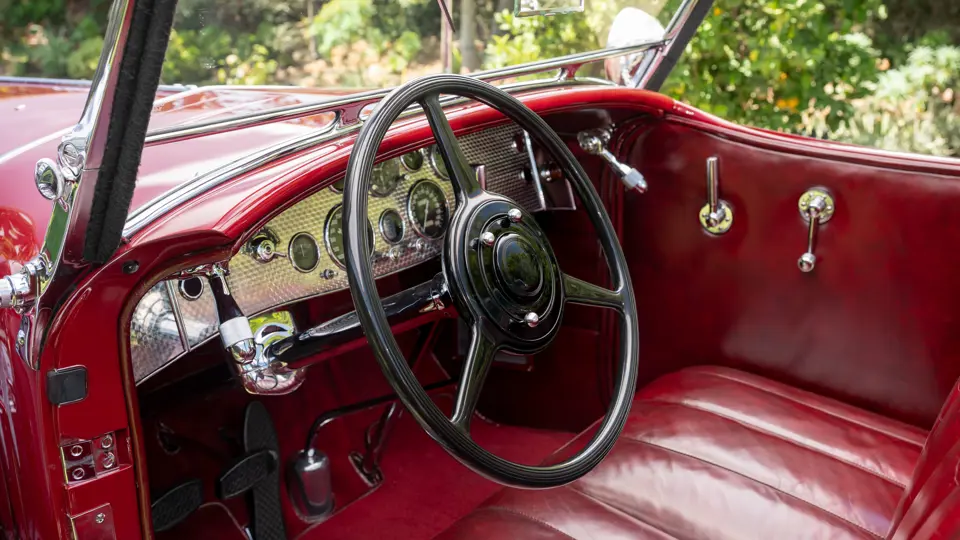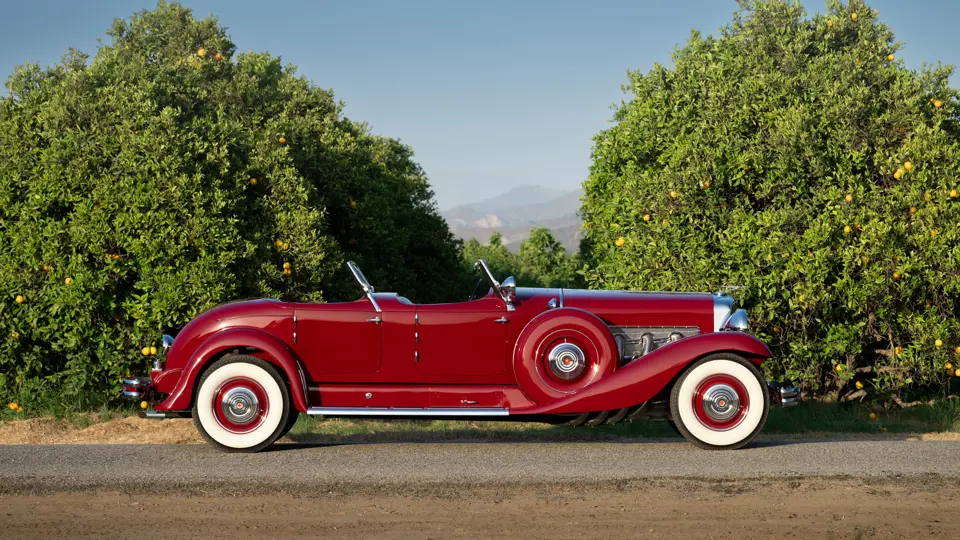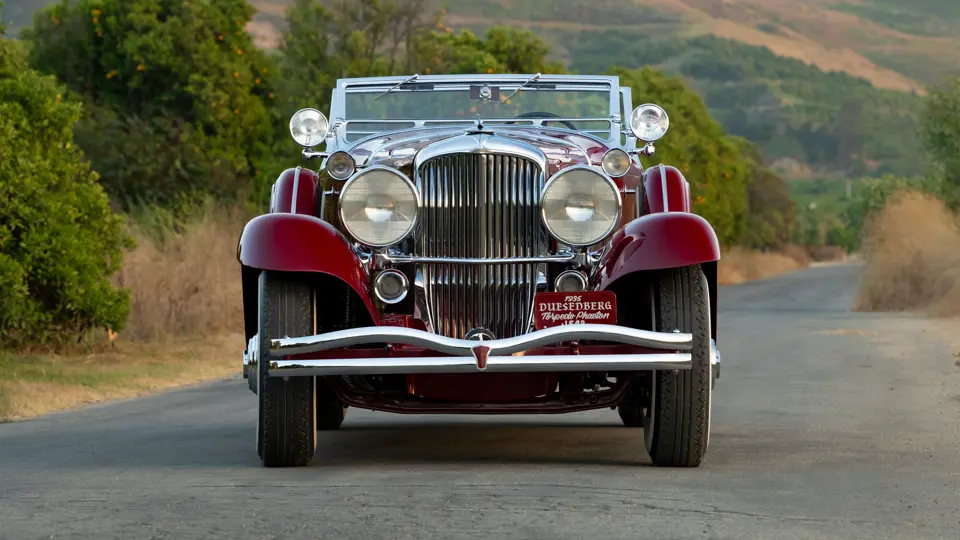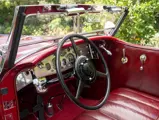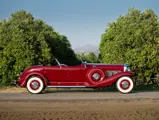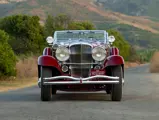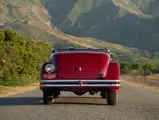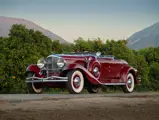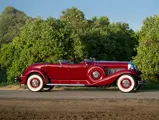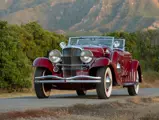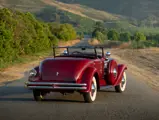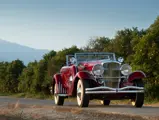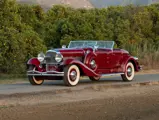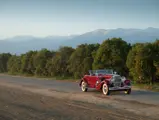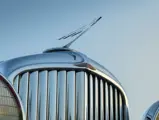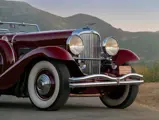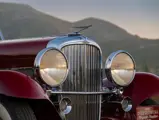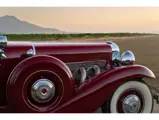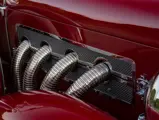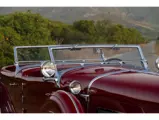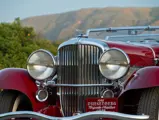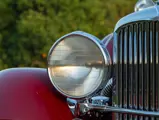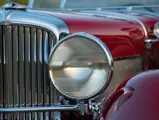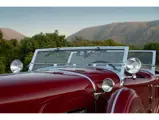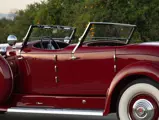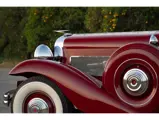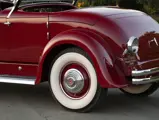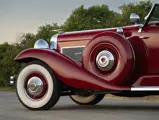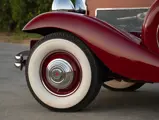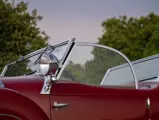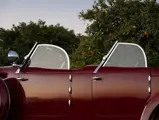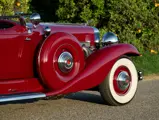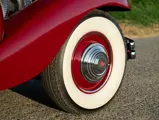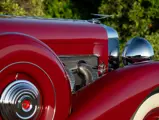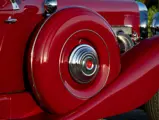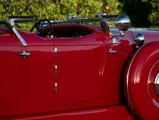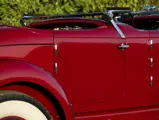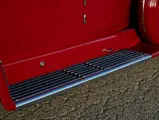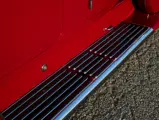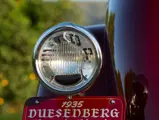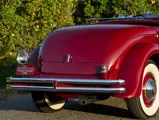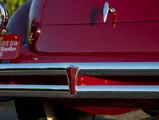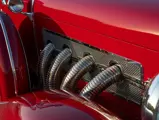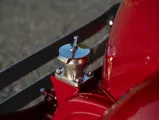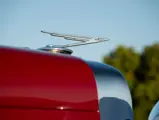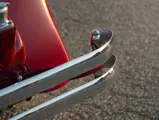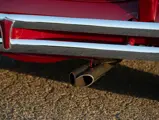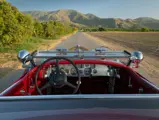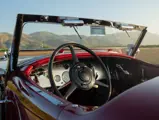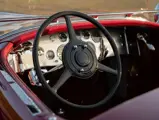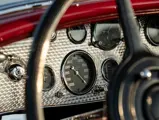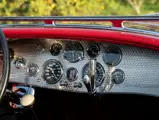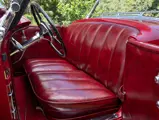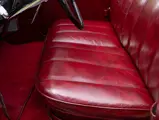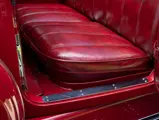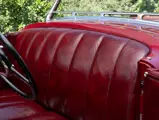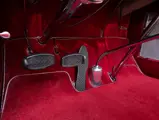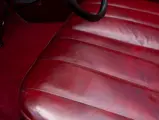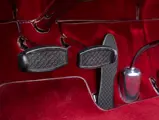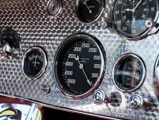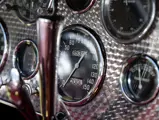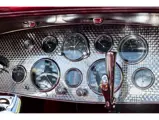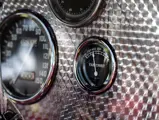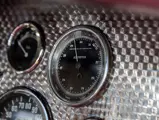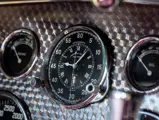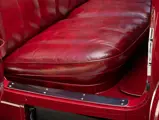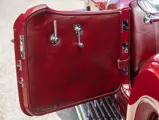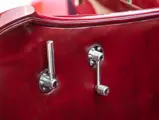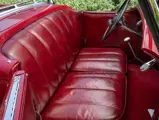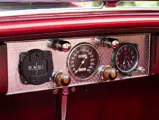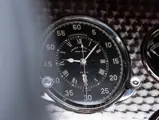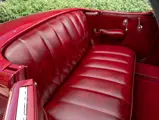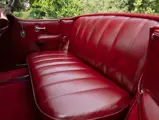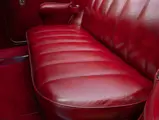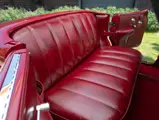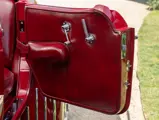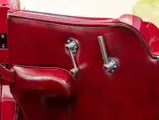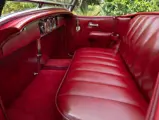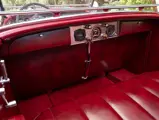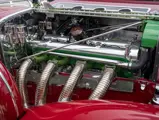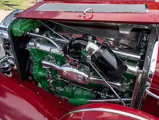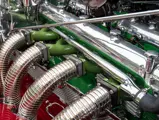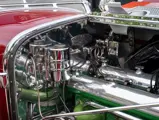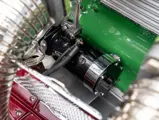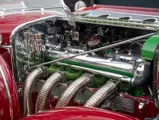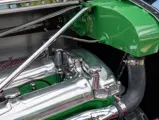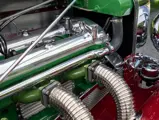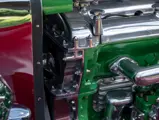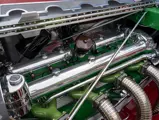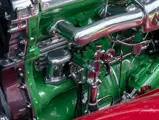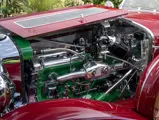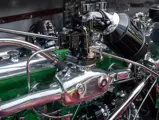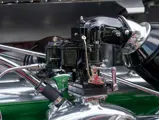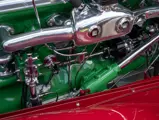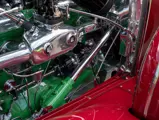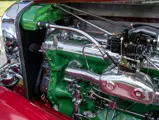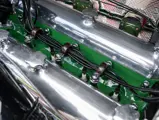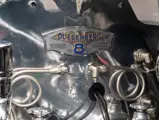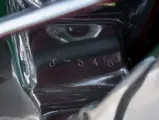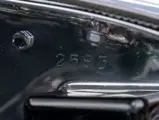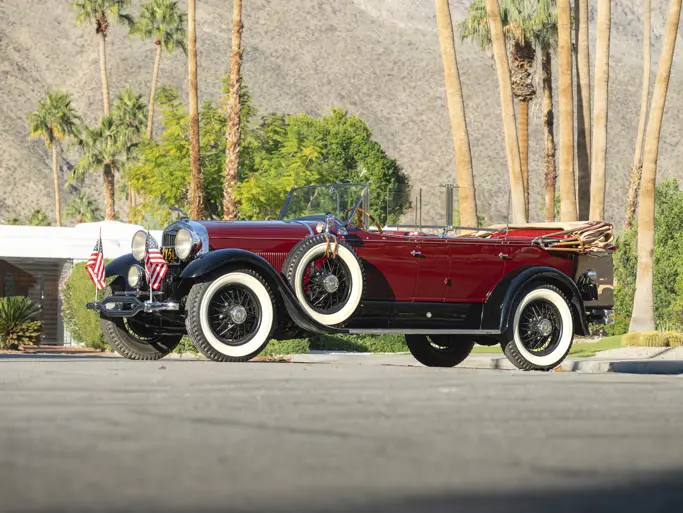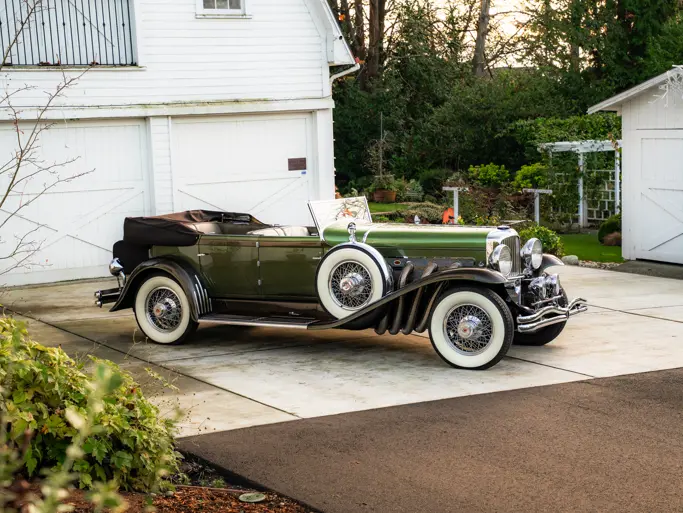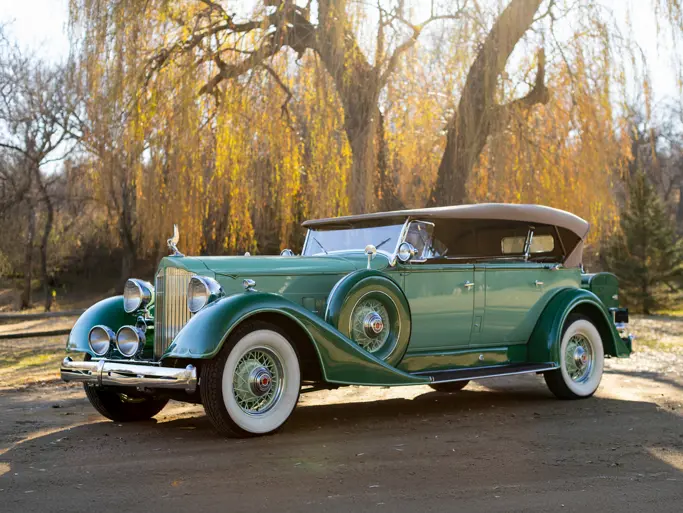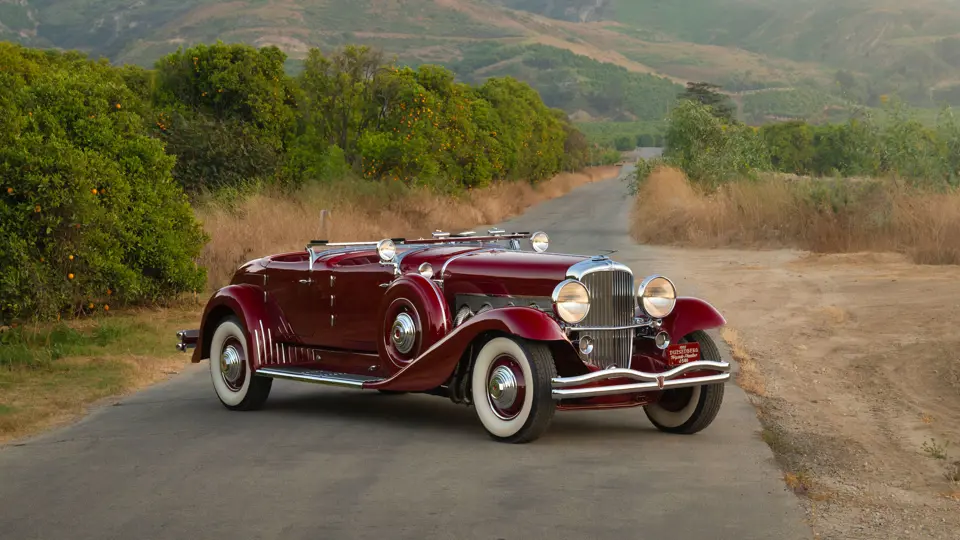
1935 Duesenberg Model J Torpedo Phaeton by Walker-LaGrande
{{lr.item.text}}
$4,405,000 USD | Sold
{{bidding.lot.reserveStatusFormatted}}
- One of the five original Torpedo Phaetons built to Gordon Buehrig’s masterpiece design
- The 1936 Los Angeles Auto Show car; featured in the film 1,000 Dollars a Minute
- Formerly owned by Fred Guyton, John Mozart, and General William Lyon
- Retains its original chassis, engine, firewall, and coachwork
- A significant design statement of its era, with folding windshields and disappearing top
- The first original Torpedo Phaeton to have been available in two decades
- An absolutely exceptional Duesenberg by any measure and stature
THE TORPEDO PHAETON: FROM FAN MAIL TO MASTERPIECE
Gordon Buehrig’s design for the Duesenberg Torpedo Phaeton is justifiably famed. With its firmly rounded lines, disappearing fabric top, folding dual rear windshields, and rear compartment instruments, it is taut, sleek, and unabashedly, fiercely sporting, in a way that few Duesenbergs, for all their beauty and glory, actually are. It looks like a gentleman’s sports car—specifically, a young gentleman’s sports car. That is no coincidence, as that is exactly what the design was created to be.
One morning, Duesenberg president Harold Ames received an eight-page letter from Marcus Jay Lawrence of Washington, D.C., declaring that he wanted, as Ames told Buehrig, “a Duesenberg built to his own ideas. He has a Model A Ford with racing equipment on the engine that he wishes to trade on the Duesenberg.” Neither Ames nor Buehrig took the letter totally seriously, but it inspired Buehrig to sketch out, as he put it, “something we would want to build for an auto show,” meeting Lawrence’s request for a body with a convertible sedan’s features, such as roll-up windows and a neatly folding top, but the lines of a phaeton. Buehrig drew the car up and Ames obligingly sent it with a polite letter to Lawrence, who responded with a request as to what the car would cost; Ames quoted $19,000. Lawrence wired back, “Proceed immediately.”
The young “fan” was, it turned out, the twenty-something heir of a wealthy Washington, D.C.-based publisher of farm journals, who reportedly had a $5,000-a-month payout from his trust fund during the 1930s. He lived as fast as his automobile drove, yet obviously had a gentlemanly side. Buehrig recounted that when young Lawrence visited Duesenberg to take delivery—indeed in his hot rod Model A, but chauffeured—he walked among the factory handing every workman a five dollar bill!
The Torpedo Phaeton was the only Duesenberg body that Buehrig ever created as an individual, from-the-ground-up design for a specific customer. That did stop the beauty of its lines from being duplicated, however. After the original, built for Lawrence to Buehrig’s design by Brunn of New York, four additional cars were produced. The first two were built by the American iteration of Weymann in Indianapolis; when that firm folded, the second pair were completed by the A.H. Walker Body Company—which more or less continued Weymann’s work, out of the same factory—and adapted Duesenberg’s trade name of “LaGrande.” All were among the most beautiful dual-cowl phaetons, and among the most beautiful Duesenbergs—and all thanks to a young man whose spirit for life carried through to an automobile design that outlived him.
J-548: THE SILVER SCREEN, SHOWS, AND ST. LOUIS
The car with chassis number 2583 and engine number J-548, offered here, is one of the two original Walker-LaGrande Torpedo Phaetons, both of which were fitted with the later skirted Model J fenders as well as 17-inch wheels to suit. In addition to having been the only Torpedo Phaeton originally delivered without side exhaust, it can be told apart from its sibling by the location of the exterior courtesy lights, which were mounted underneath the rear doors rather than at the center of the car.
Duesenberg historian Ray Wolff recorded that J-548 was built for Hallie Plaisted of Beverly Hills, California, and delivered in November 1935. It made a cameo appearance in several scenes of the 1935 Republic comedy film, 1,000 Dollars a Minute, which immortalizes on-screen the car in its original delivery trim, complete with wheel covers and the late-production “JN” skirted fenders. In this same form it went on to appear on the Duesenberg stand at the 1936 Los Angeles Auto Show, as proven in a photograph published in the Winter 1975 issue of The Classic Car. Soon after the car was traded back and sold to Dr. W.B. Dallas, a St. Louis insurance executive and breeder of pigs and cattle, and moved east to that city. It is believed that the current supercharger-style side exhaust was installed by the car’s delivery to Dr. Dallas.
In 1947 J-548 passed from Dr. Dallas to the collecting partnership of William Banks and Frank D. McPhee of Centralia, Illinois, then the following year to early enthusiasts Clifford Greve and Norris Allen, returning it to St. Louis. Greve and Allen were part of a small and close-knit cadre of pioneering Full Classic connoisseurs in that city, and were both Duesenberg fanatics. Greve eventually bought out Allen’s share in the car.
One of the young collectors mentored by Greve and Allen was an architect named Fred Guyton, who had much admired both men’s automobiles. Guyton began acquiring fine pre-war automobiles himself in the early 1970s, and in 1972 became the next fortunate owner of J-548, retrieving it from the Greve carriage house (and, not long after, moving into the Greve residence—bringing the car back home!). The Duesenberg remained as-acquired, in largely original and unrestored condition, and oft-driven.
Very few cars that entered The Guyton Collection ever left it during his lifetime. Alas, circumstances forced J-548 to become an exception, and in 1984 it was acquired by yet another prominent figure of the St. Louis vintage automobile scene, Fred Weber. Mr. Weber had the car restored by Fran Roxas in its present livery, after which it was exhibited at events all over the country, winning its class at Pebble Beach and Meadowbrook as well as its Primary First at the ACD Club National Reunion in 1986, and achieving two perfect 100-point scores in CCCA Grand Classics in 1987.
From the Weber stable the Duesenberg passed in 1989 to the renowned collector John Mozart of California, in whose ownership it appeared in the famous 1990 book, The Classic Car by Beverly Rae Kimes. It was not long after sold by Mozart to General William Lyon, himself owner of numerous extraordinary Duesenbergs, and later into the collection of its present owners. The restoration has been well-preserved within their collection, with the recent addition of correct wheel covers, as fitted when it was new; in fact, in 2024 it achieved Third in Class at the Pebble Beach Concours d’Elegance.
THE SURVIVORS
Of the five Torpedo Phaetons produced, Marcus Lawrence’s Brunn original was, alas, damaged beyond repair in an early accident, and its parts scavenged. The remaining four have survived to be prized—and that is no understatement; an original Torpedo Phaeton has not been sold, publicly or otherwise, in two decades.
J-548 is not only the first to be released in recent memory, but is an inarguably outstanding Duesenberg by any measure, having been loved since it was just a seven-year-old used automobile in 1942; since World War II it has been in the hands of men and women who appreciated it, and thus it has remained, while restored, absolutely intact, with the chassis, firewall, engine, and body with which it departed Indianapolis in 1935. Few Duesenbergs can so claim to have been so loved; even fewer are one of Gordon Buehrig’s unrivaled masterpieces of design, and fewer still, to put a fine edge on it, are available for sale.
The Torpedo Phaeton still shines. It still roars with potency. It is, in a word, youthful.
And that is exactly what it was created to be.
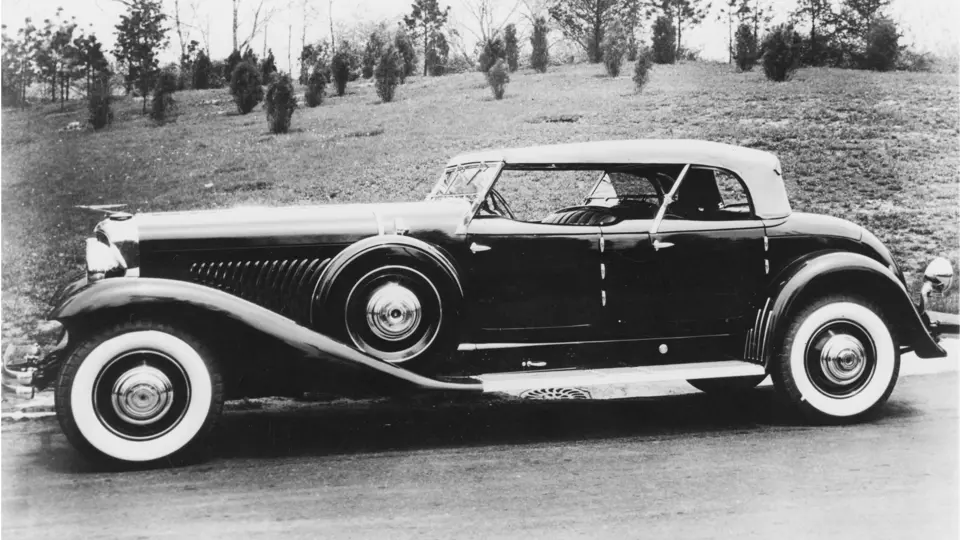
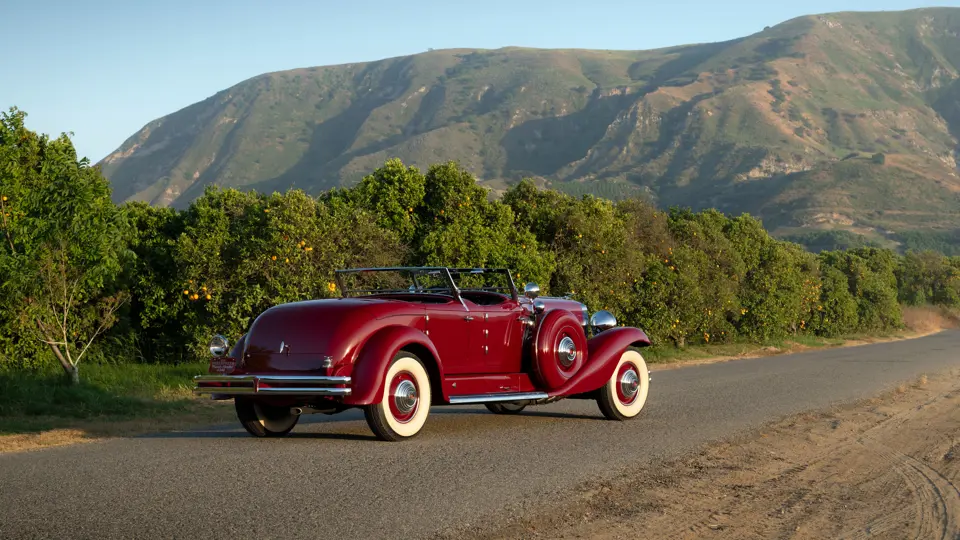
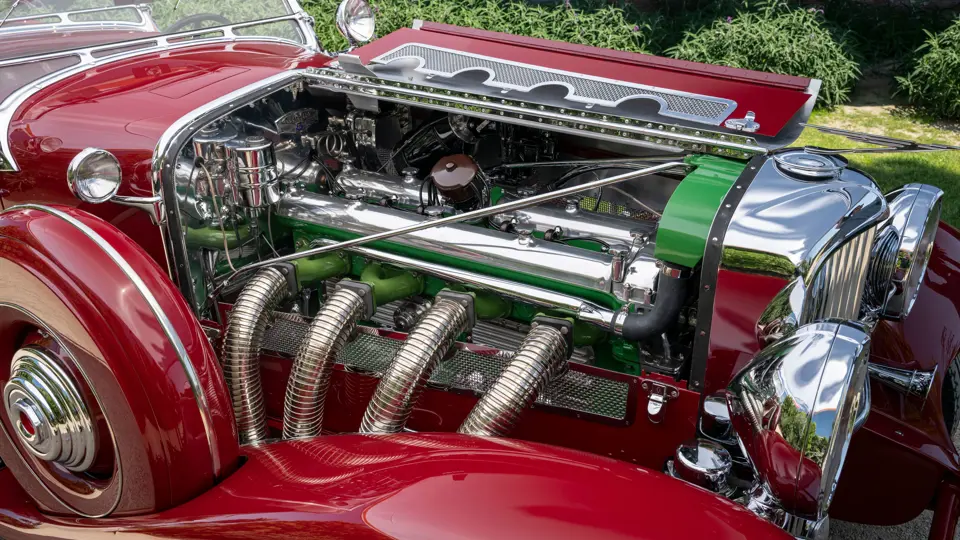

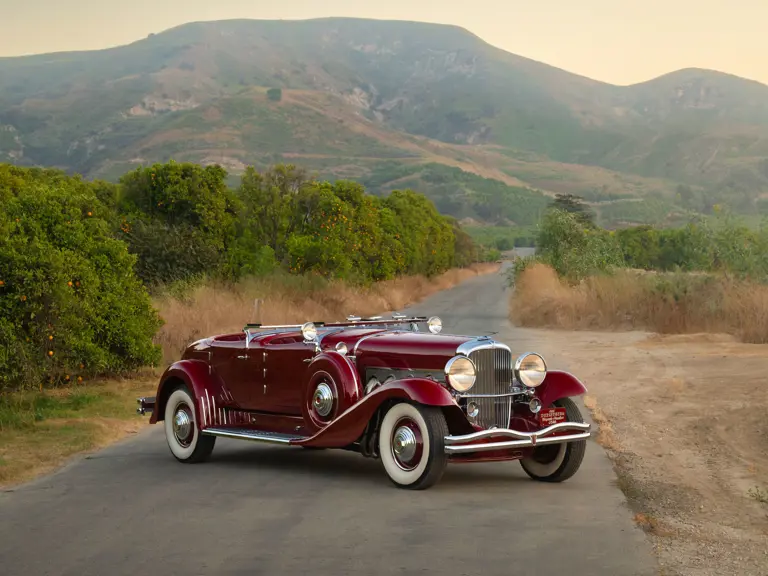
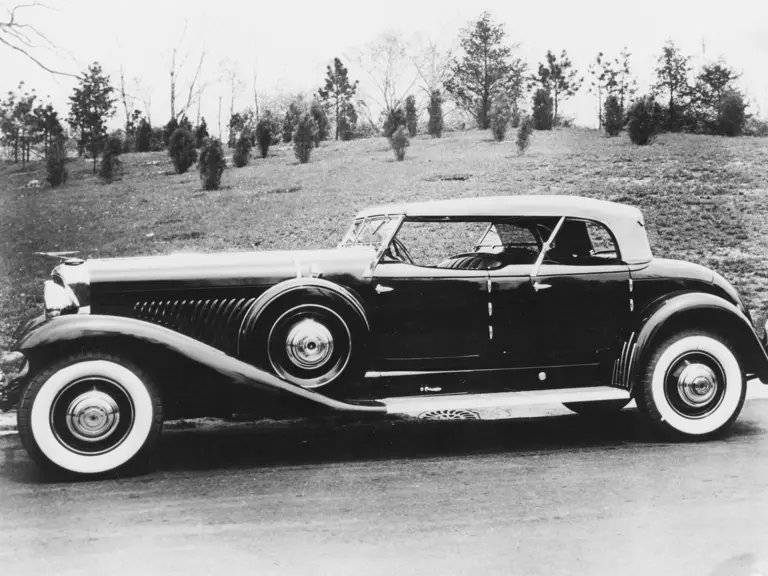
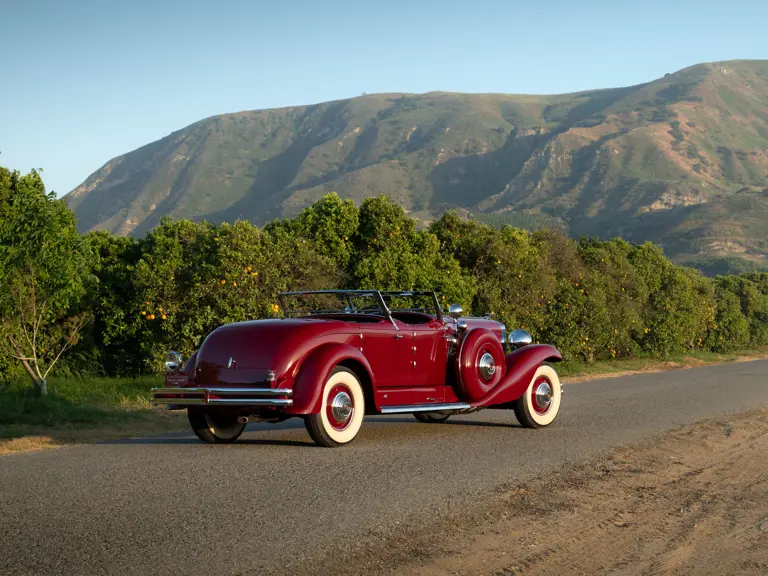



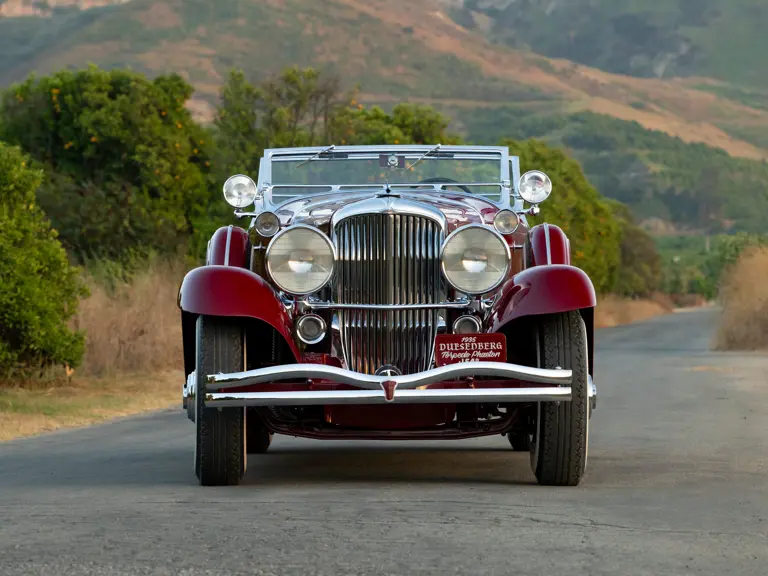
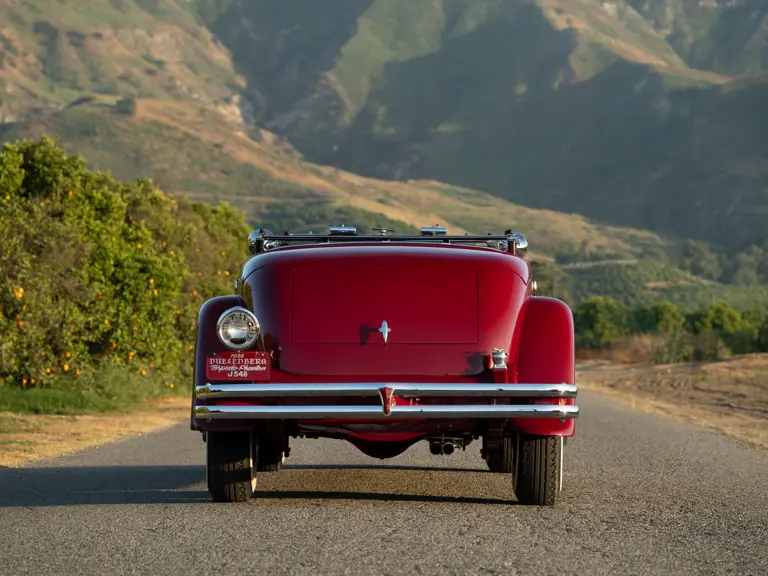
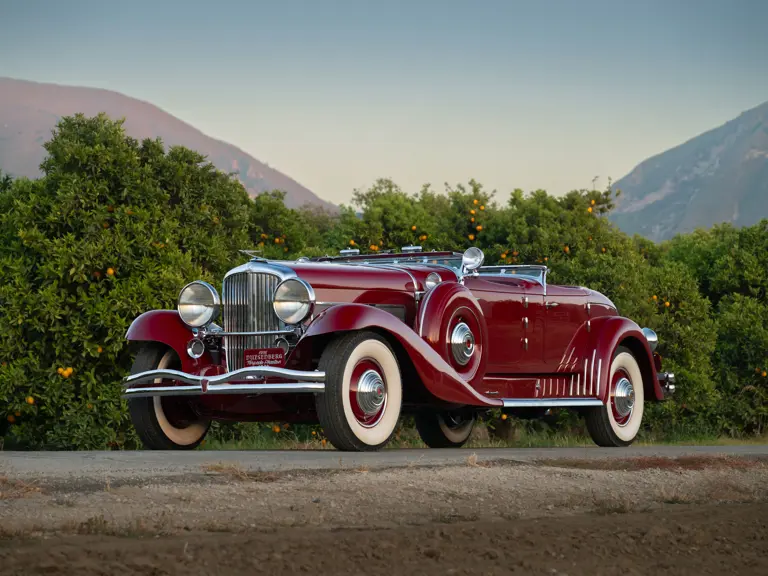

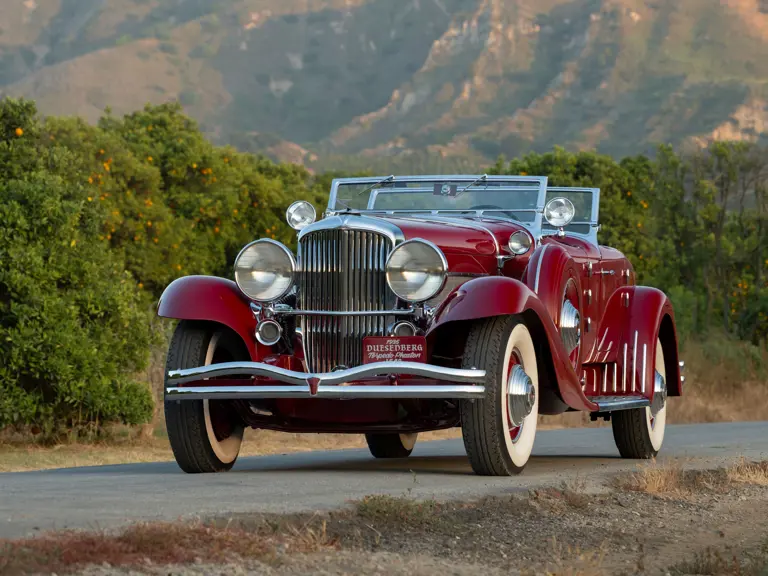
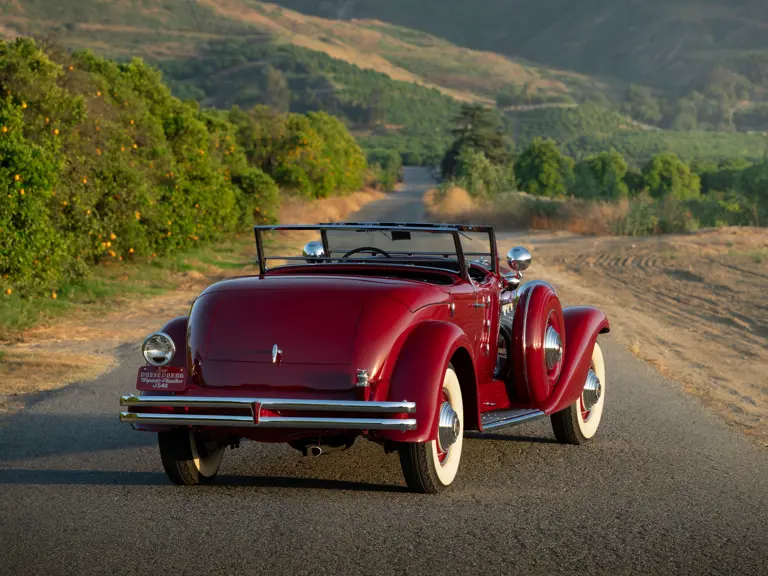
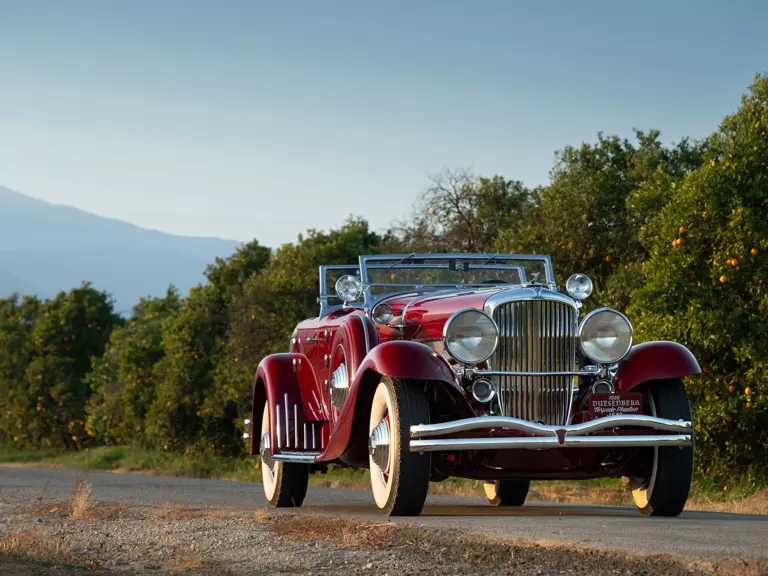
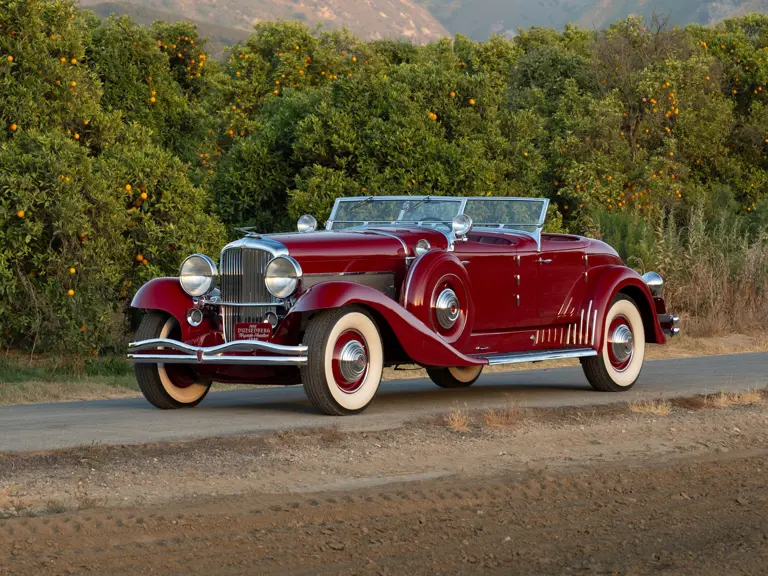
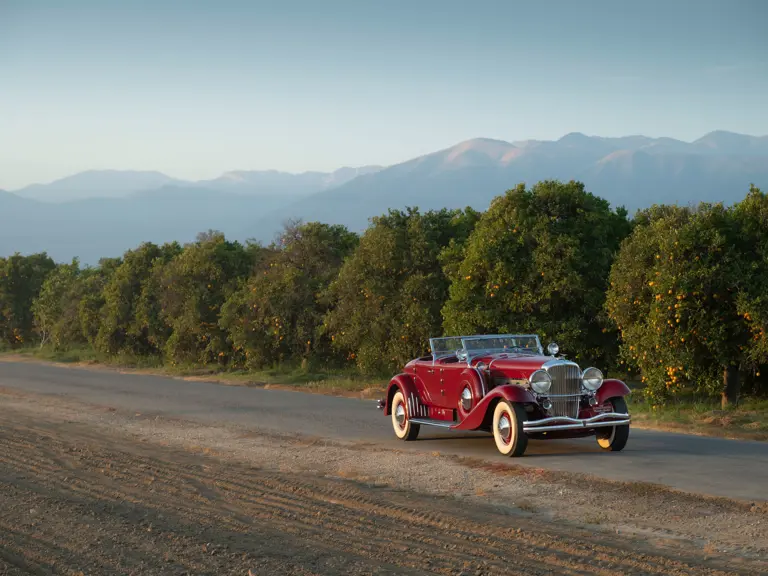
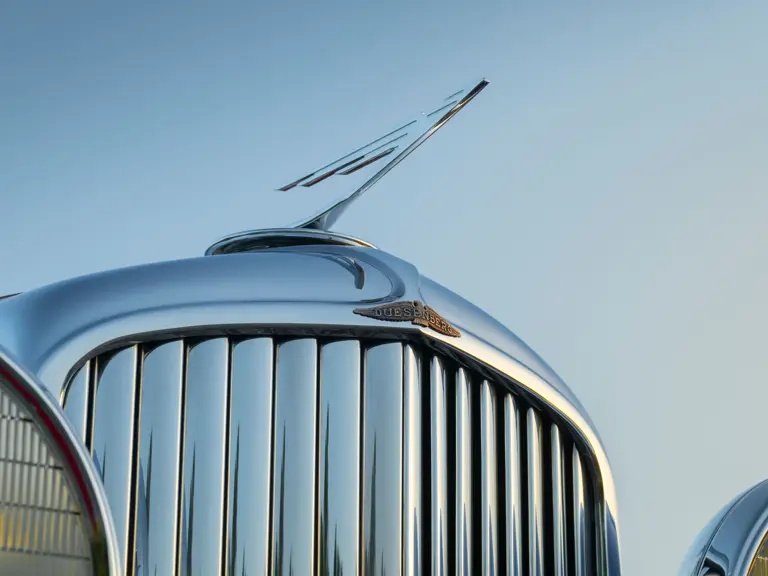
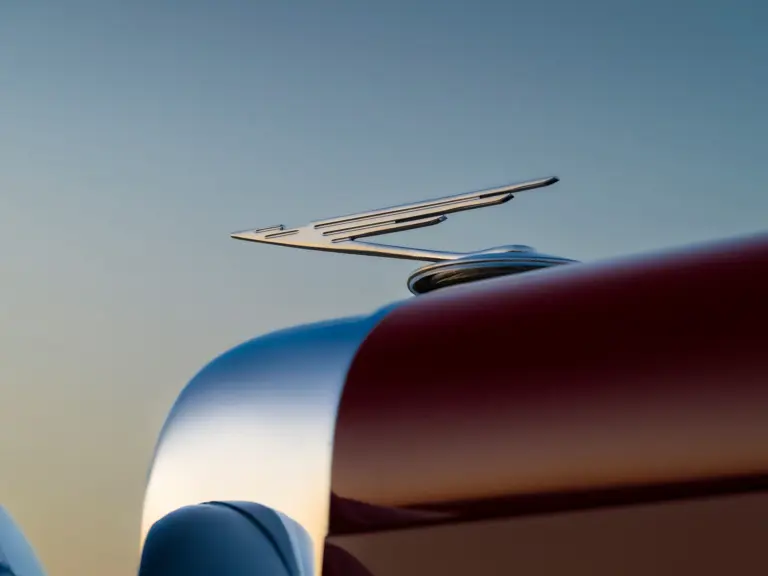
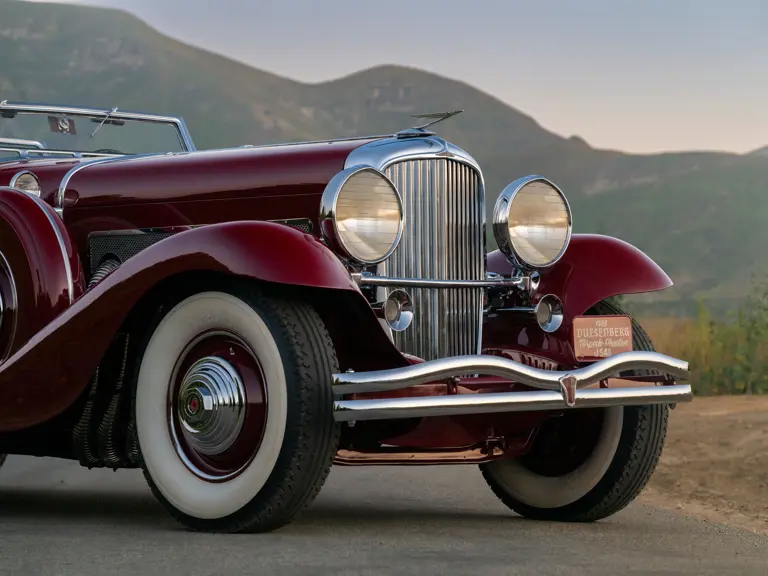
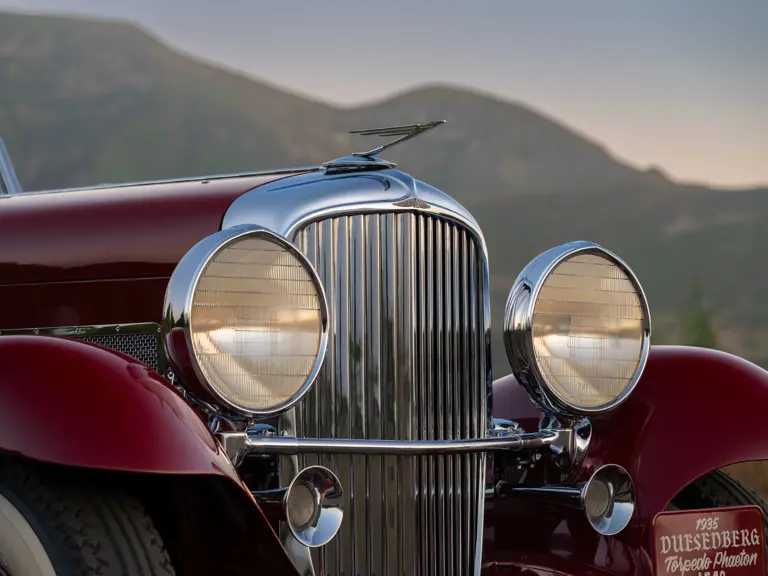
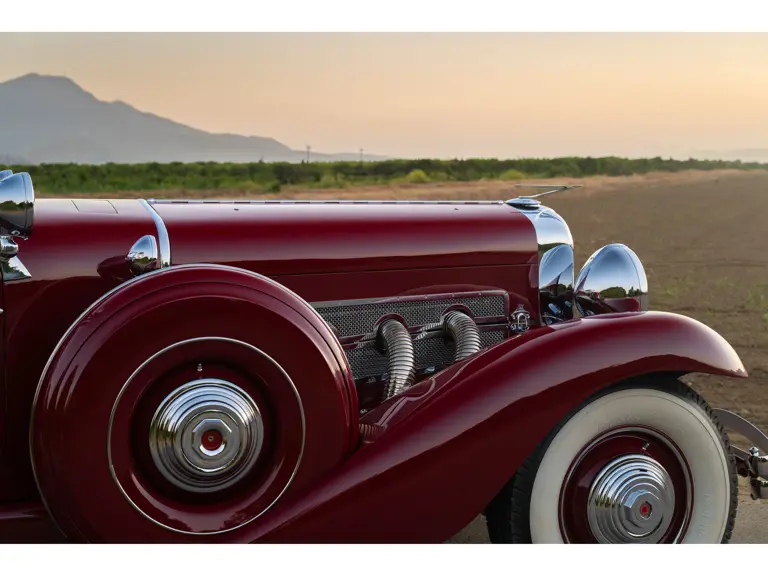
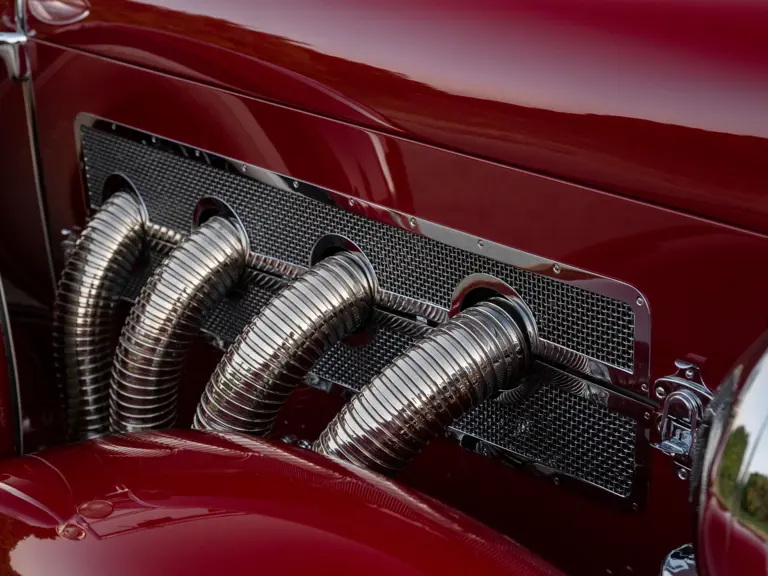
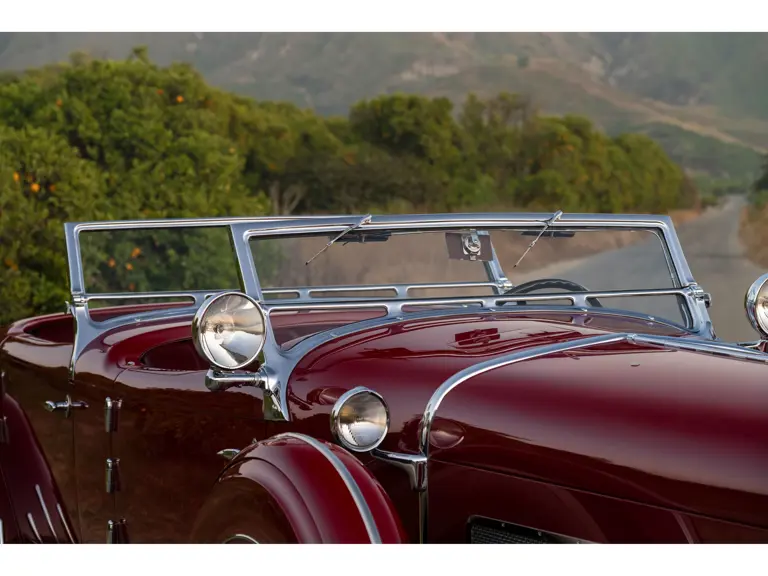
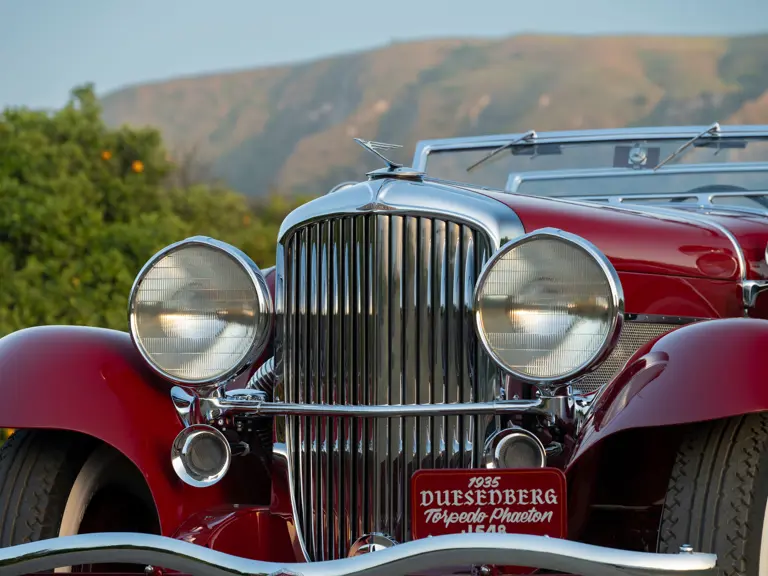
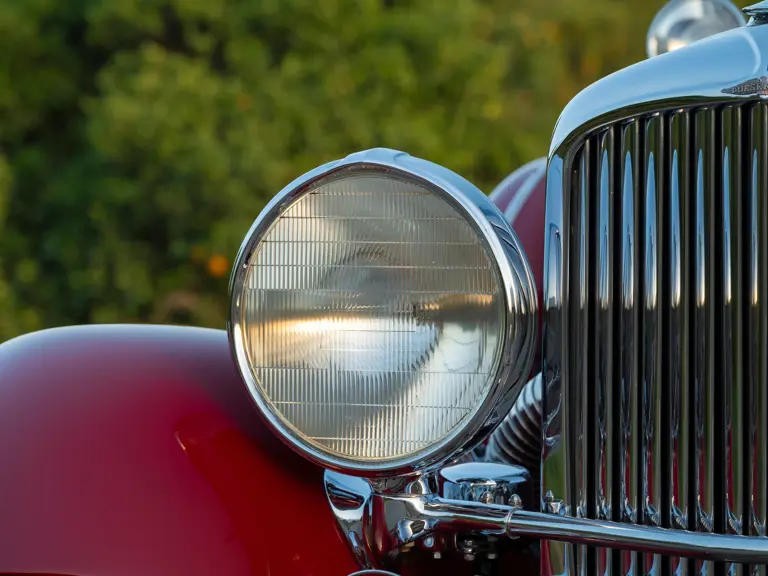
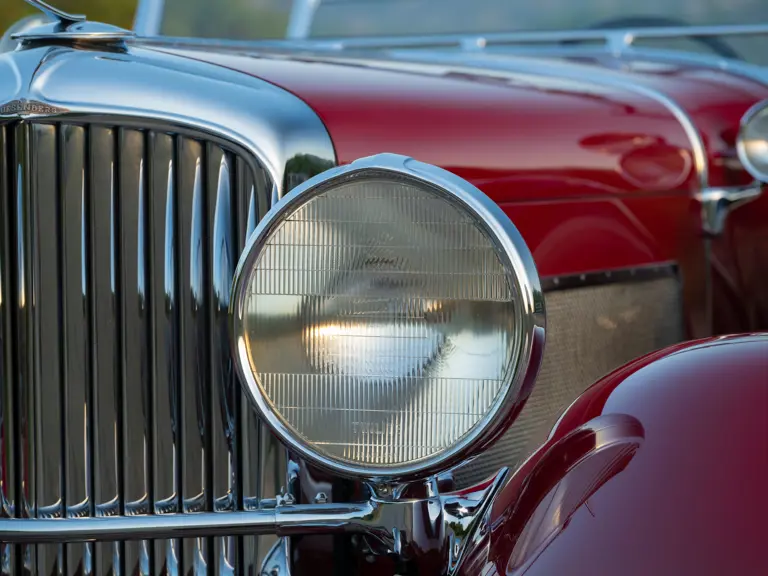
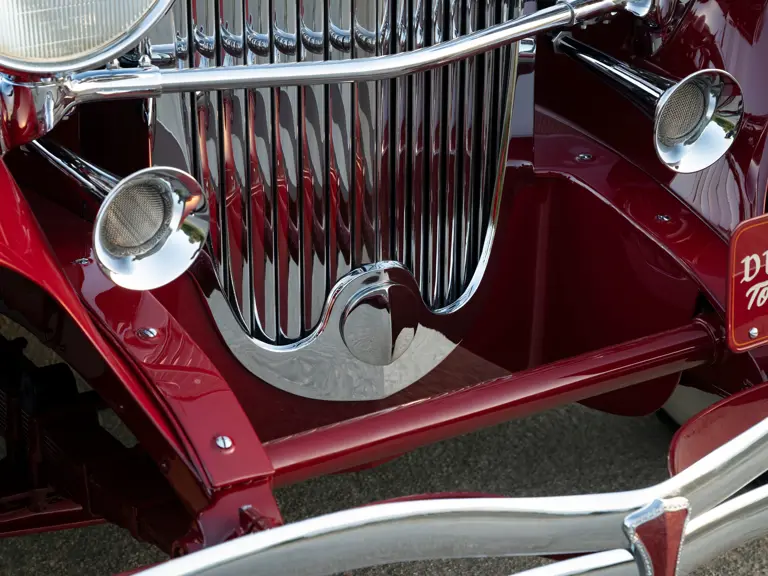
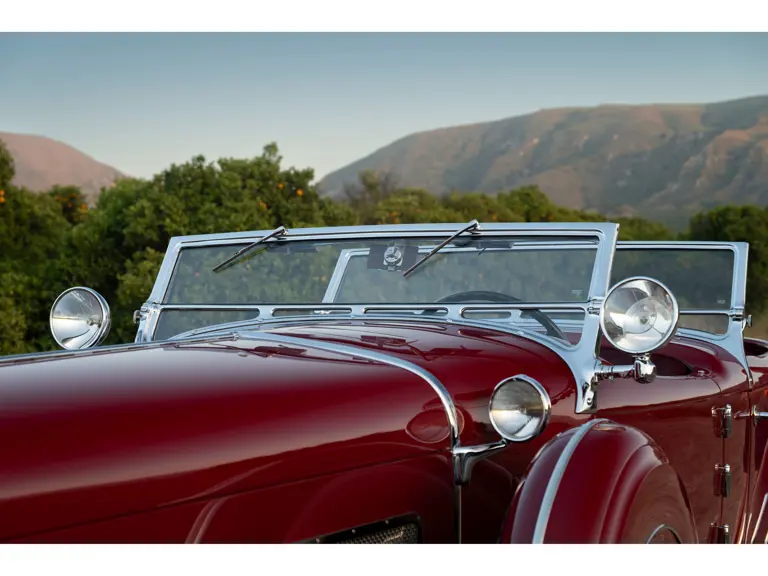
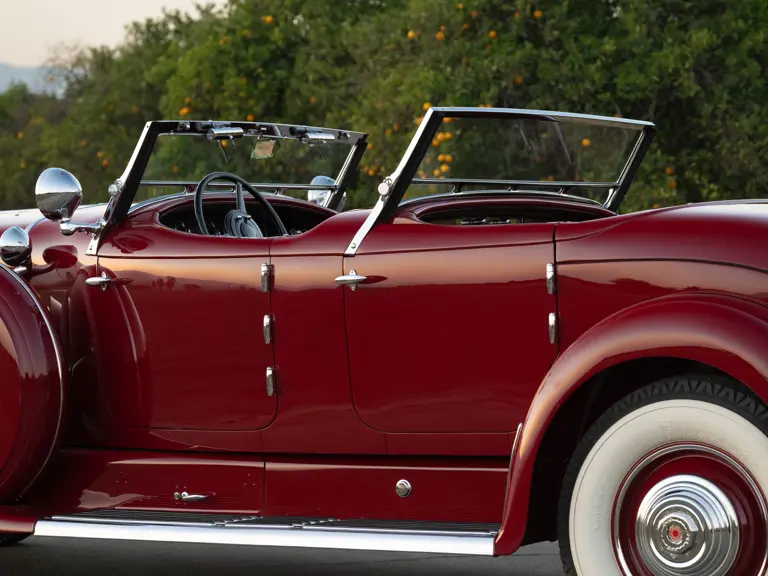
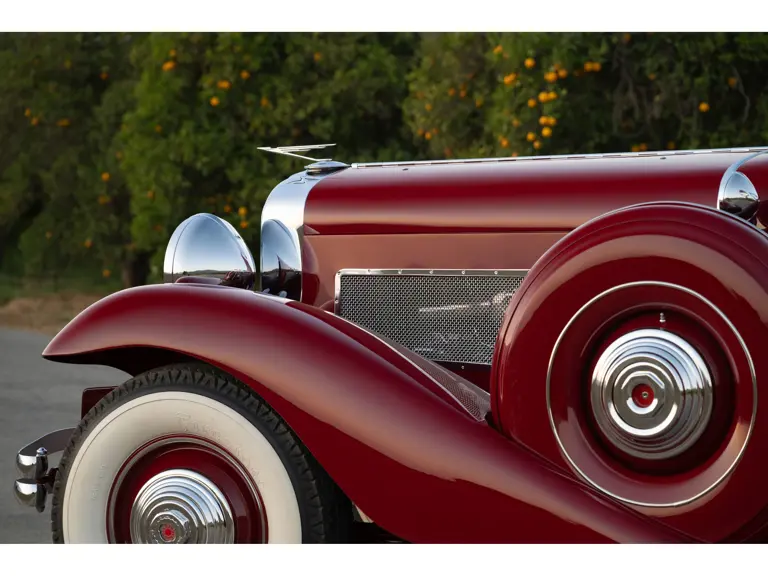
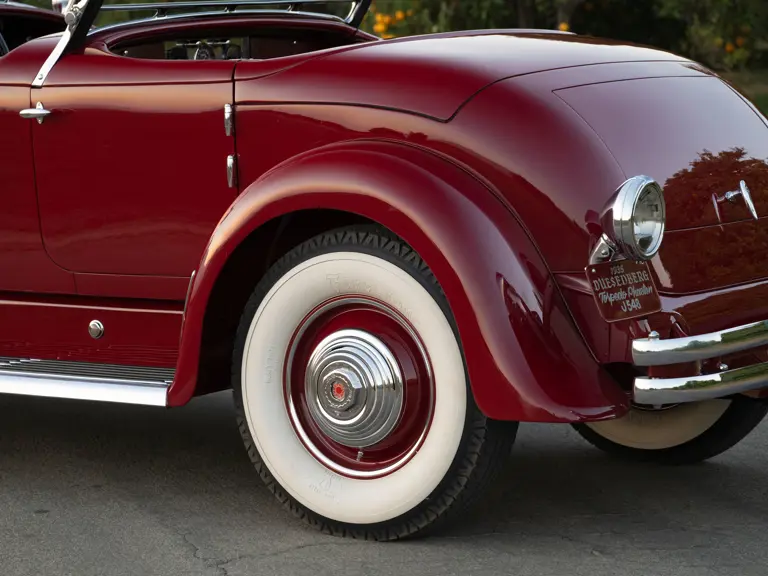
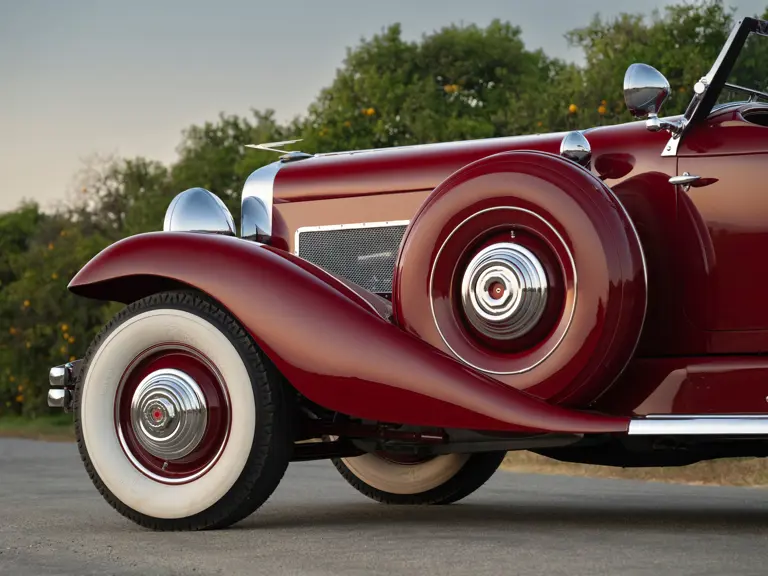
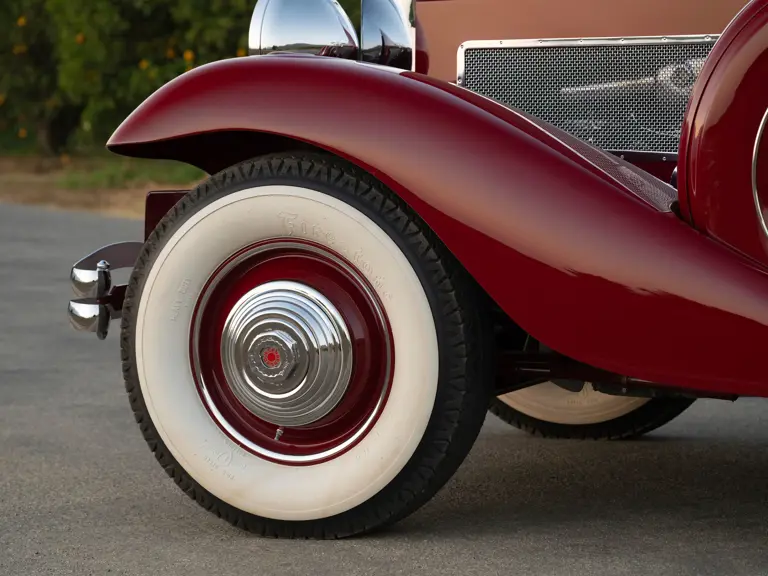
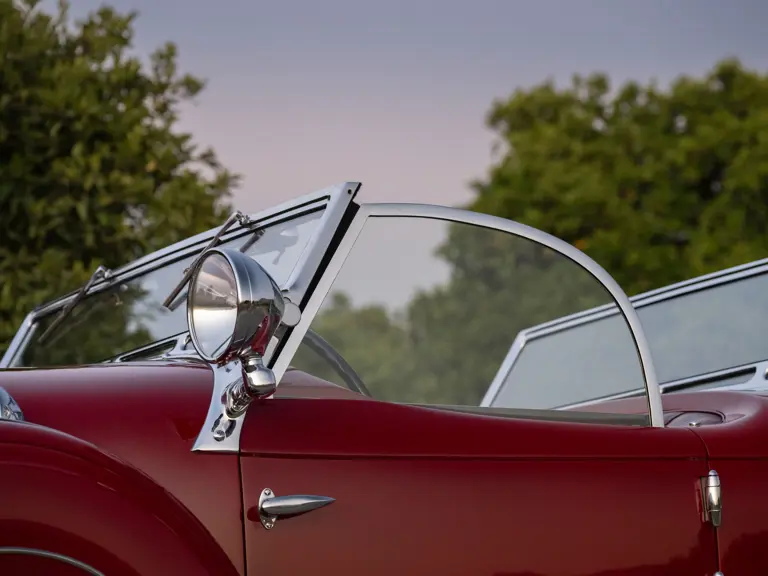
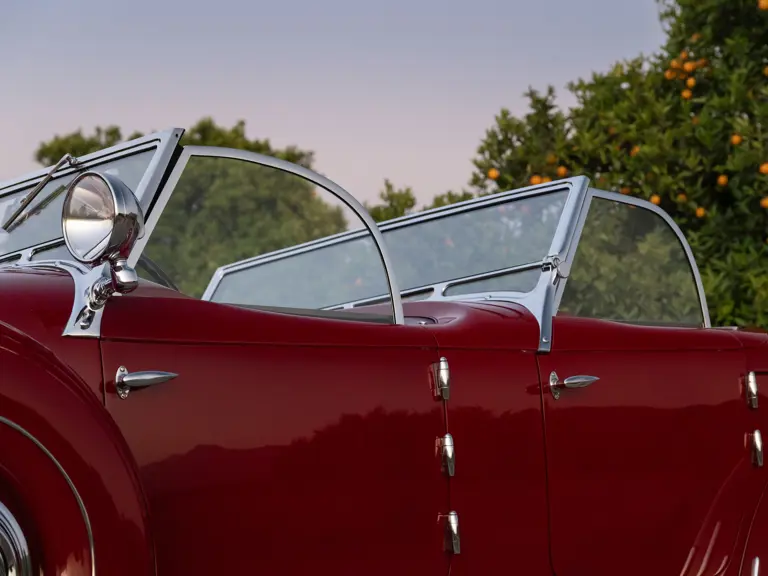
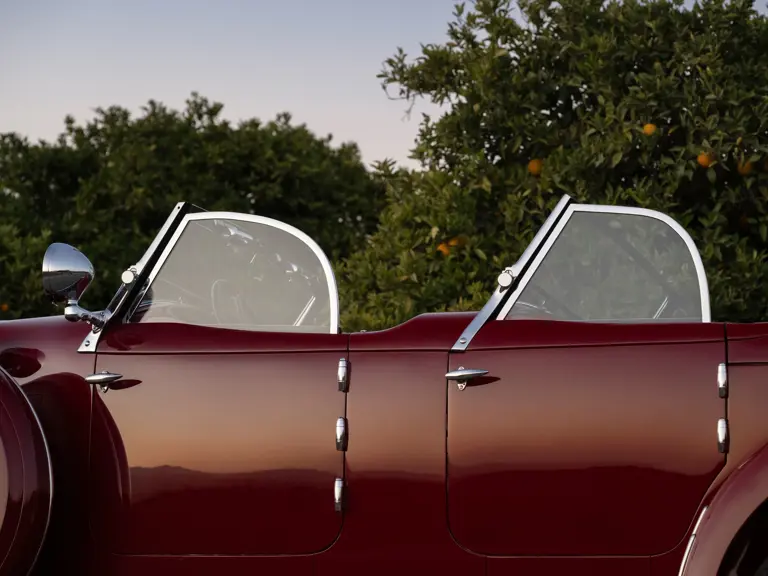
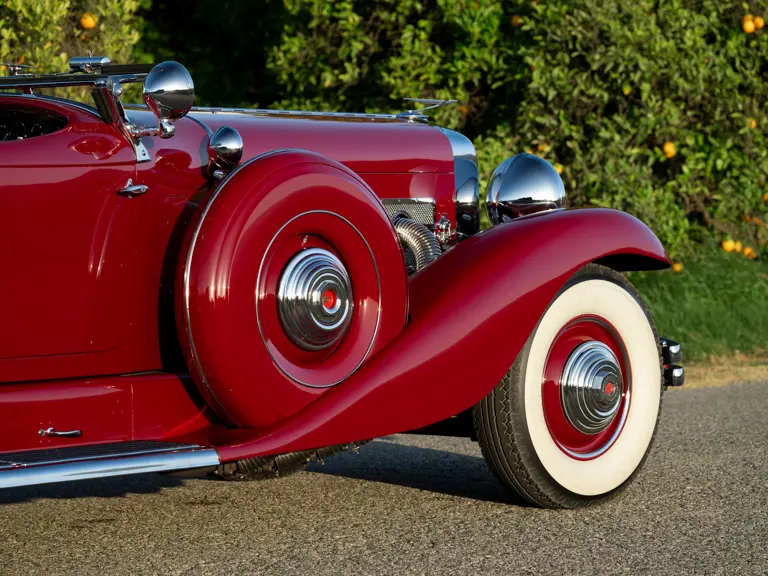
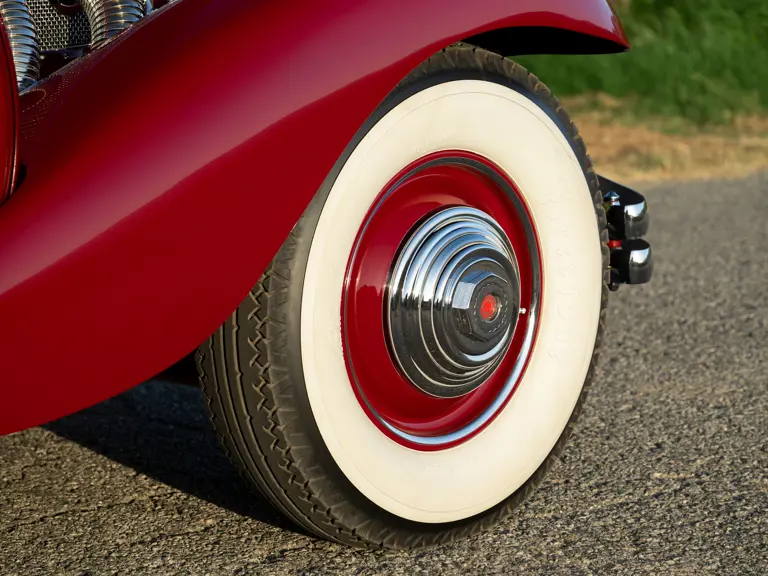
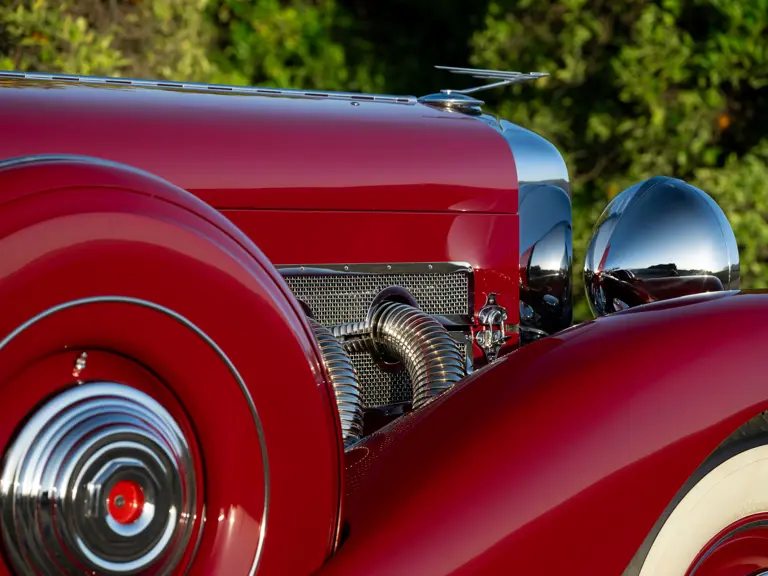
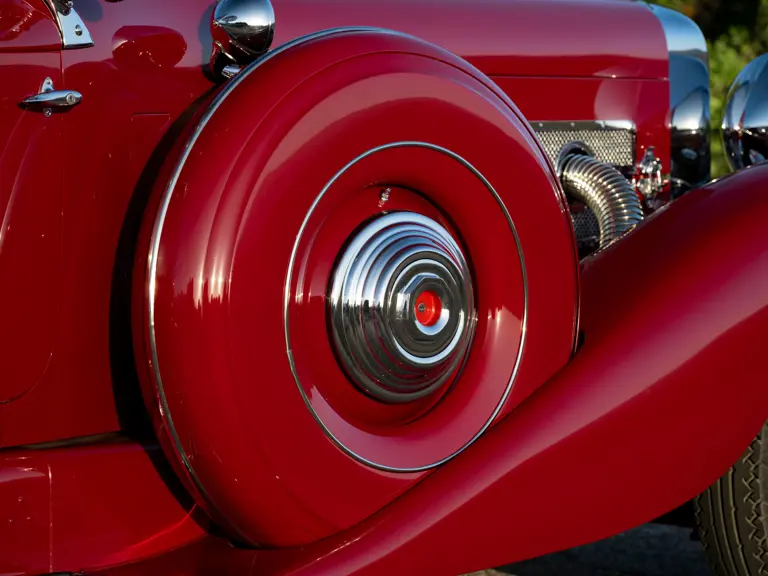
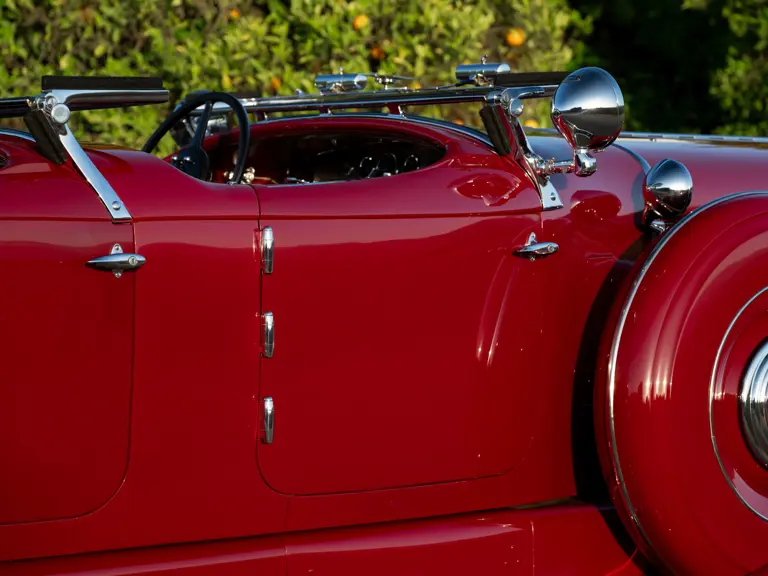
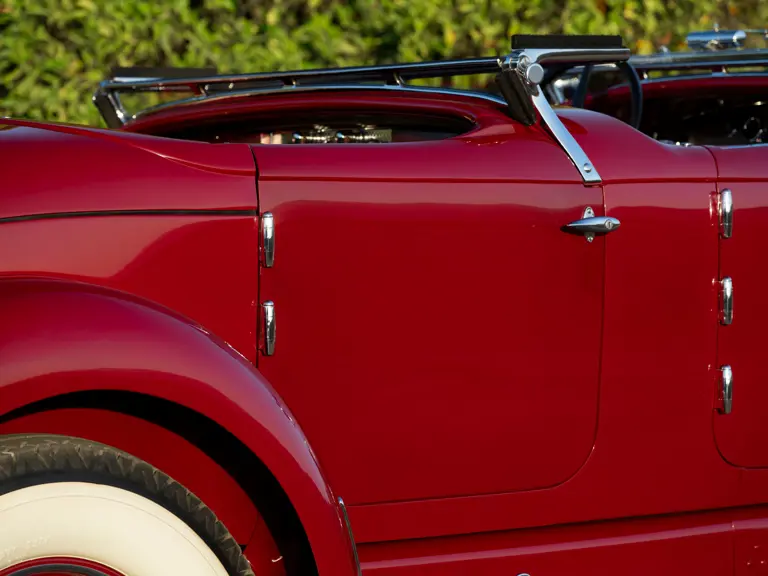
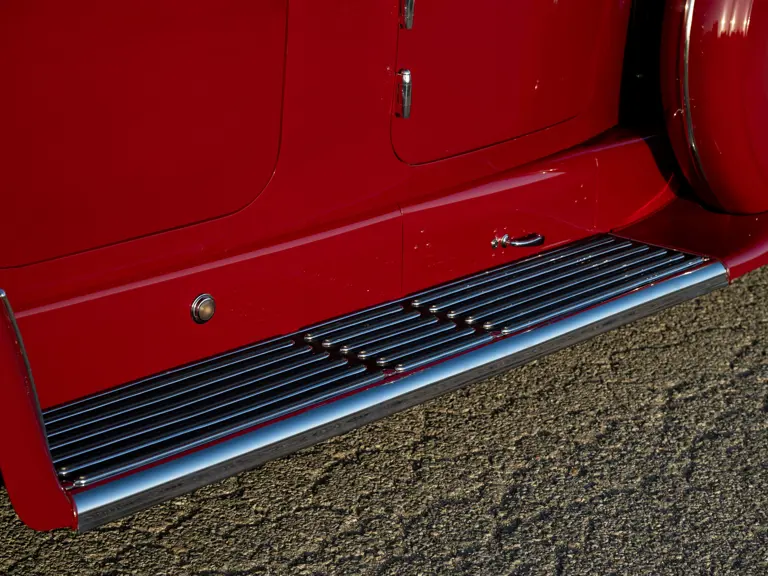
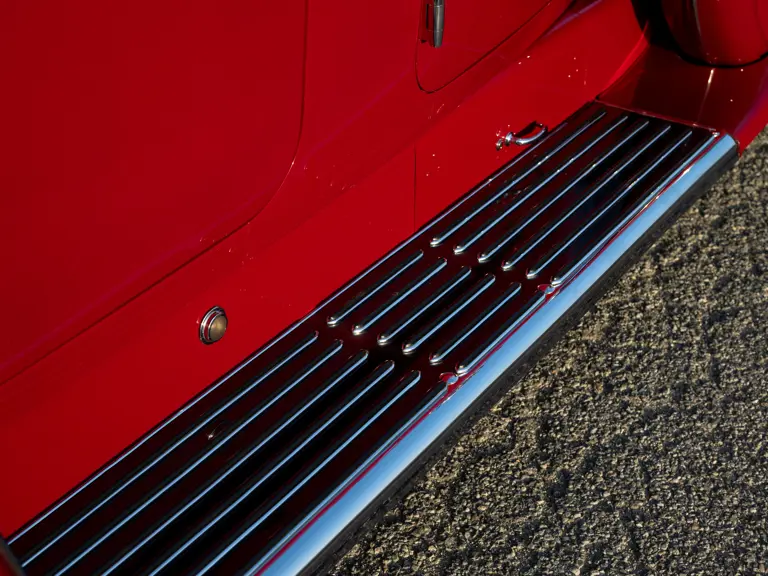
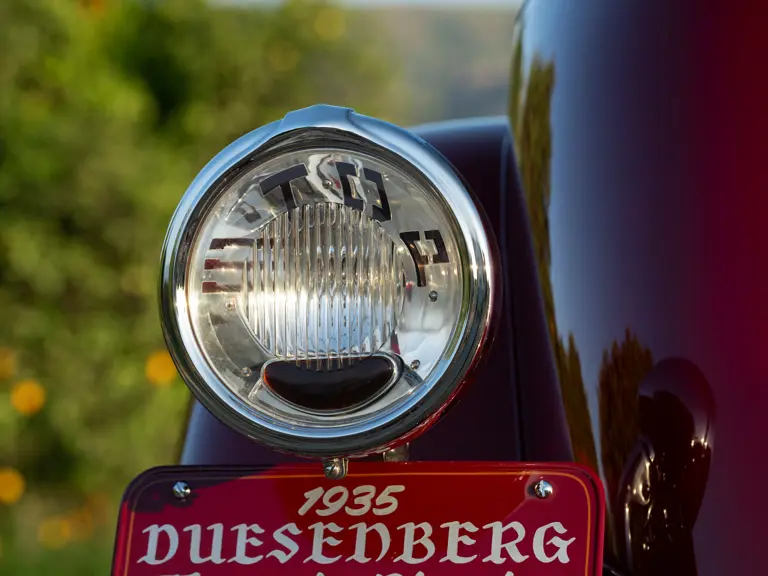
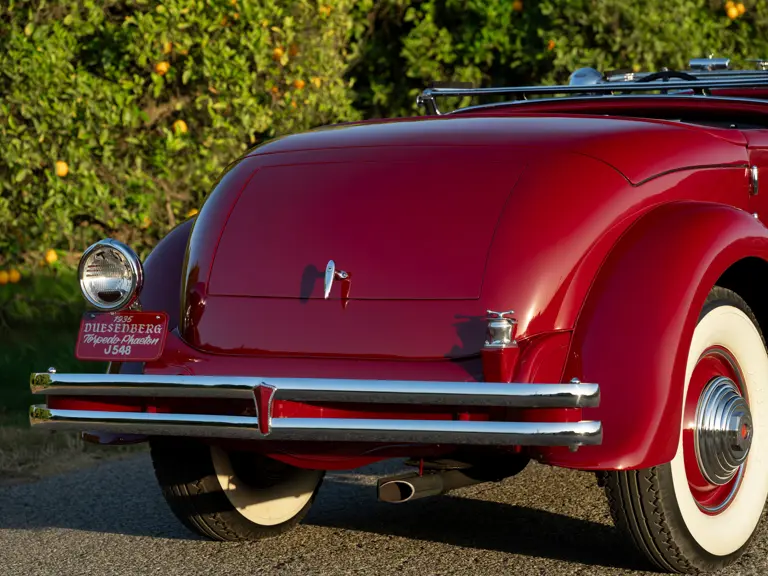
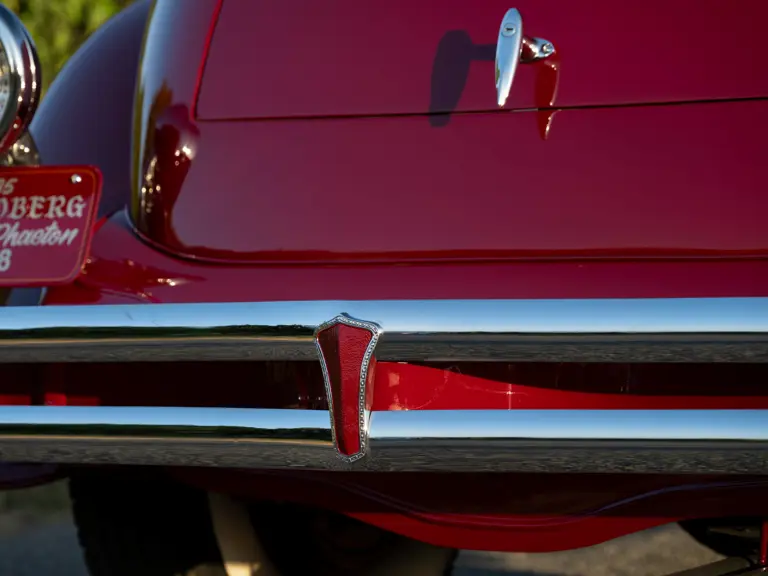
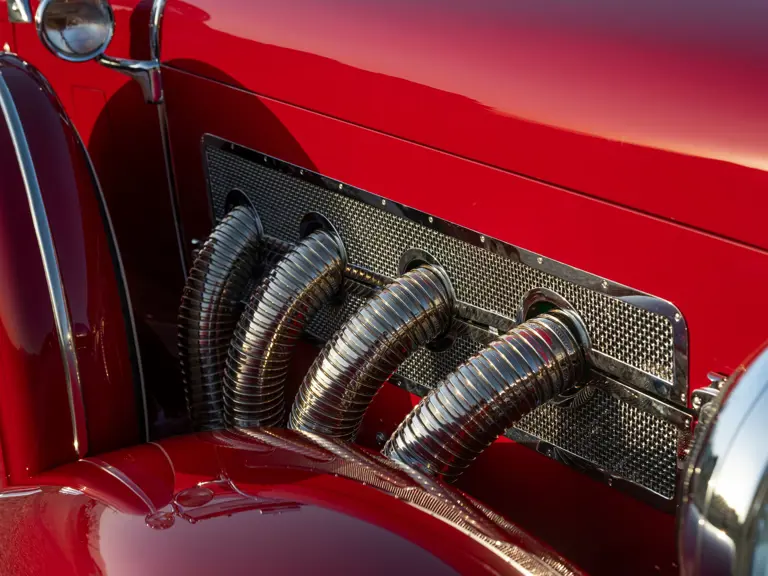
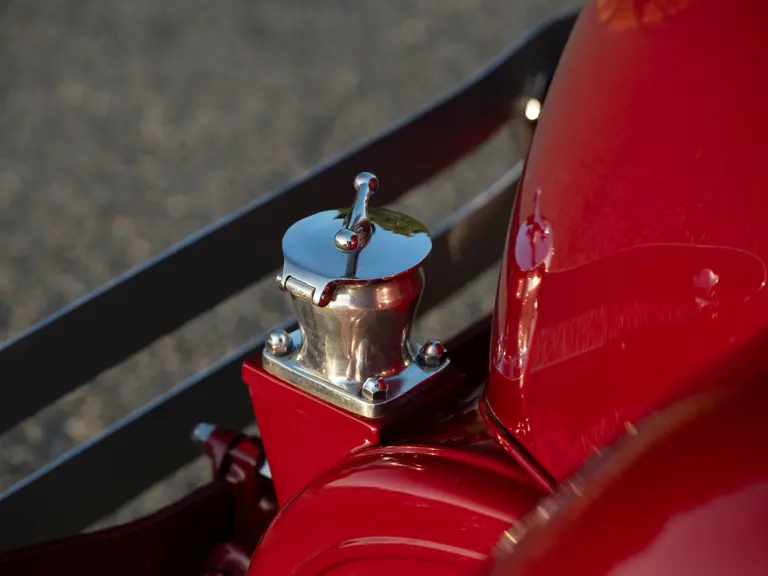
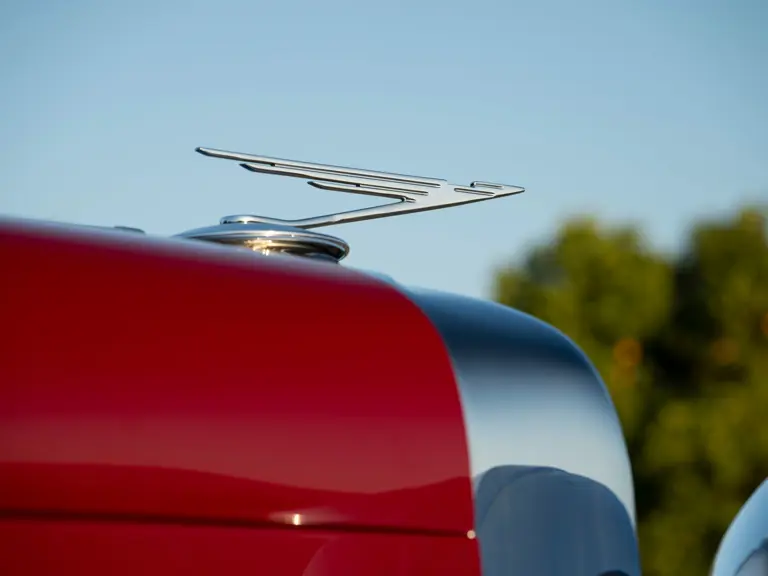
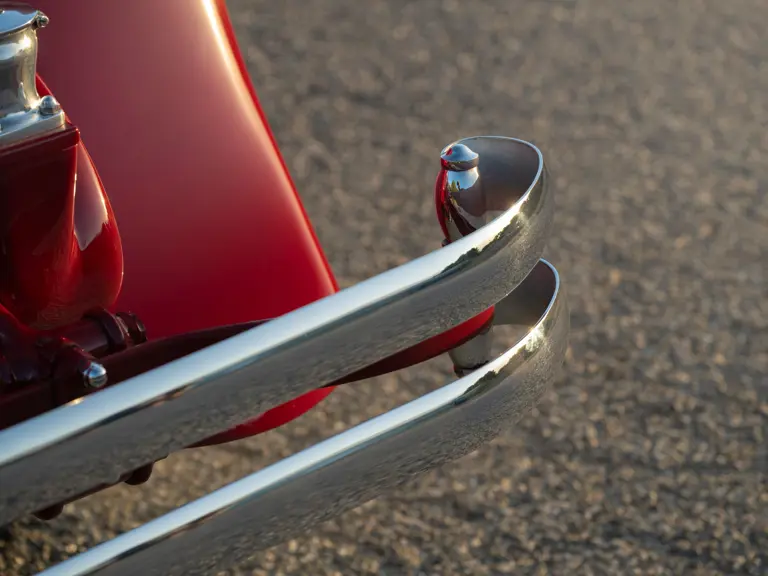
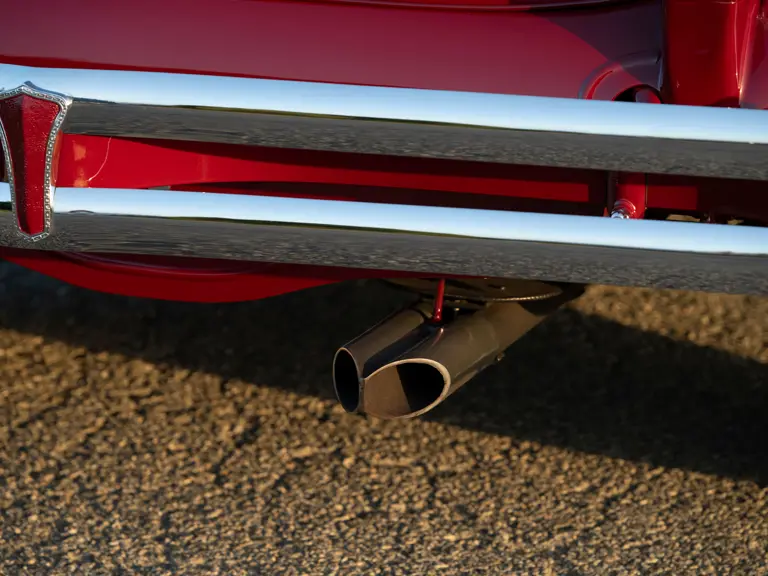
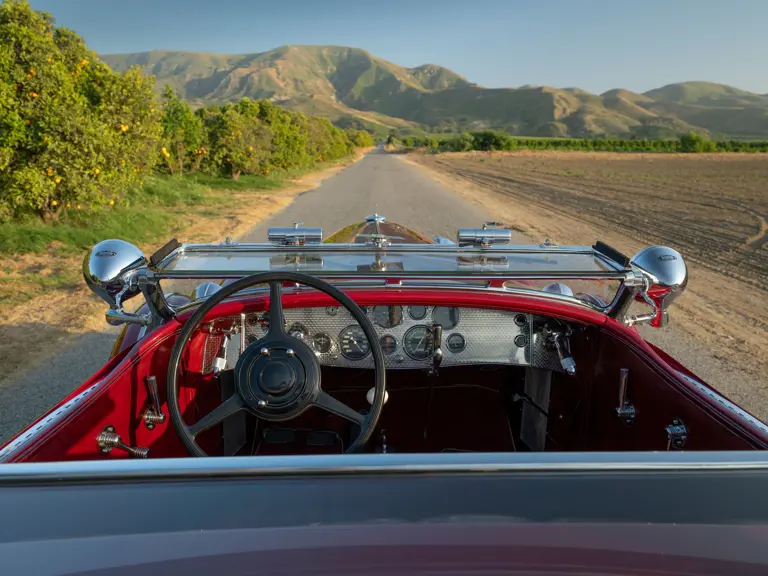
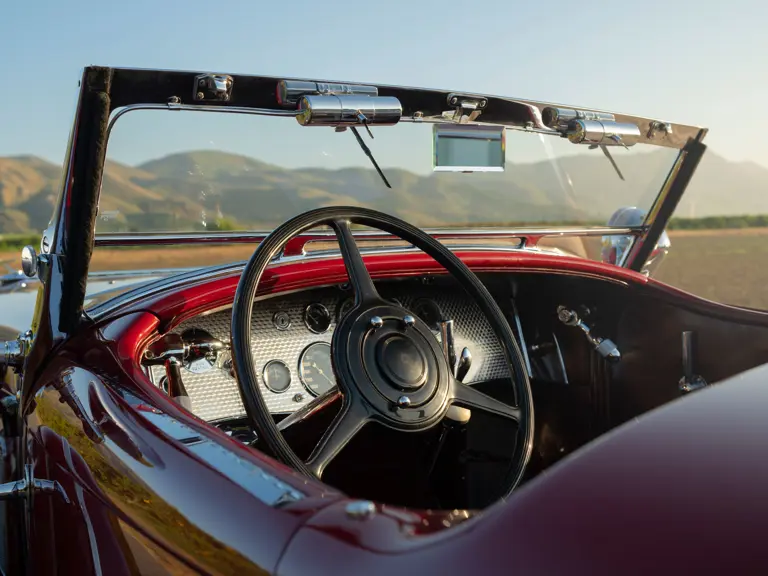
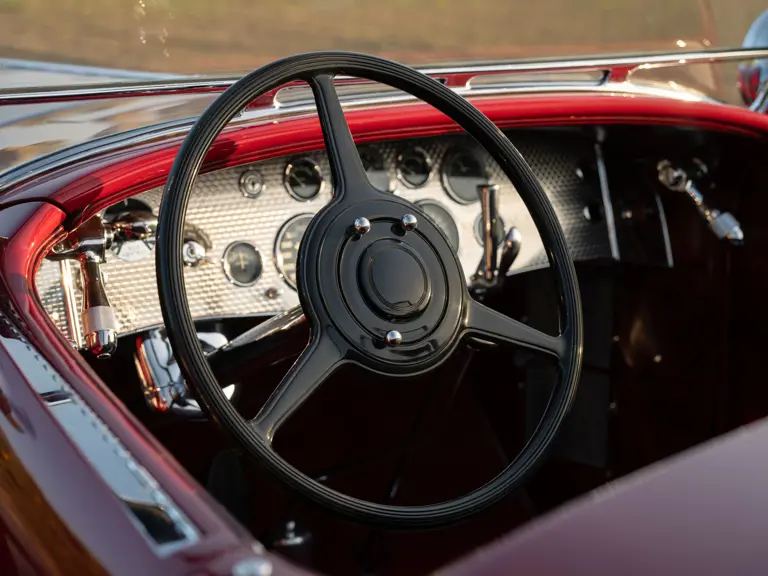
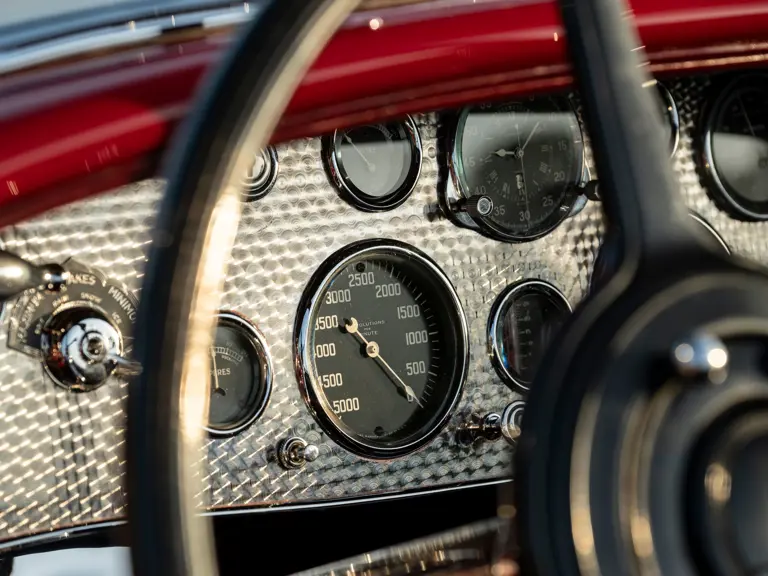
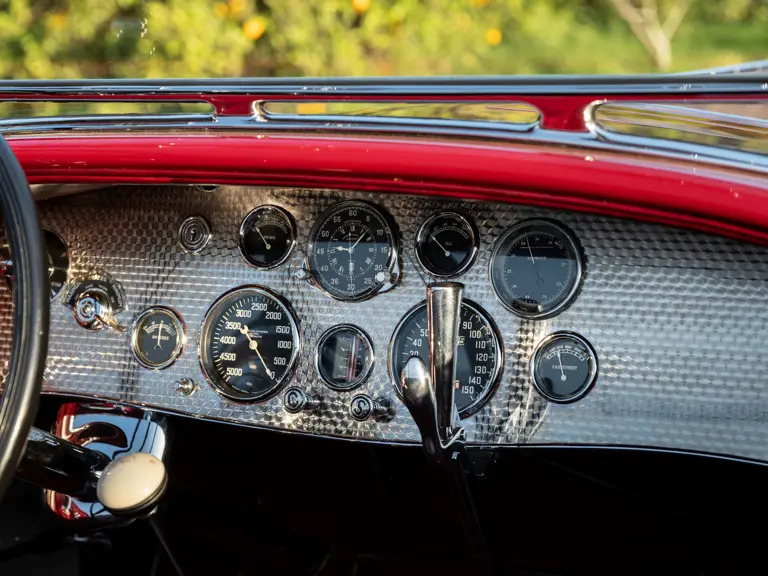
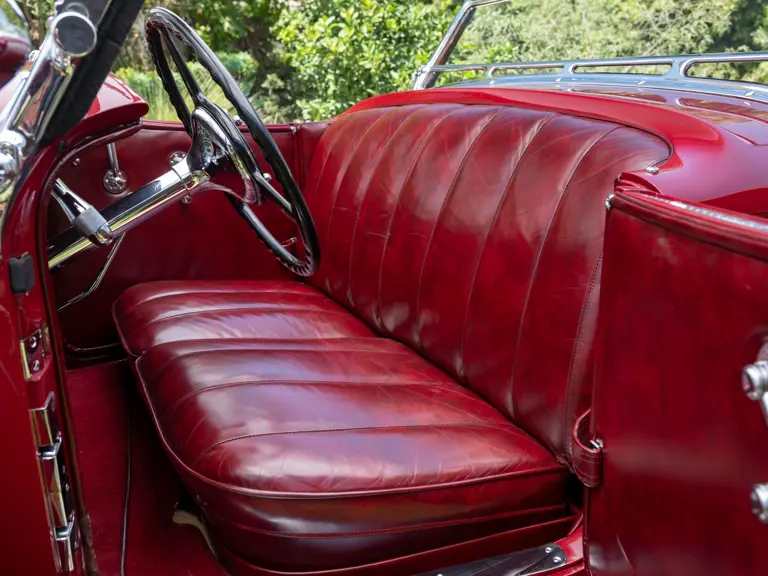
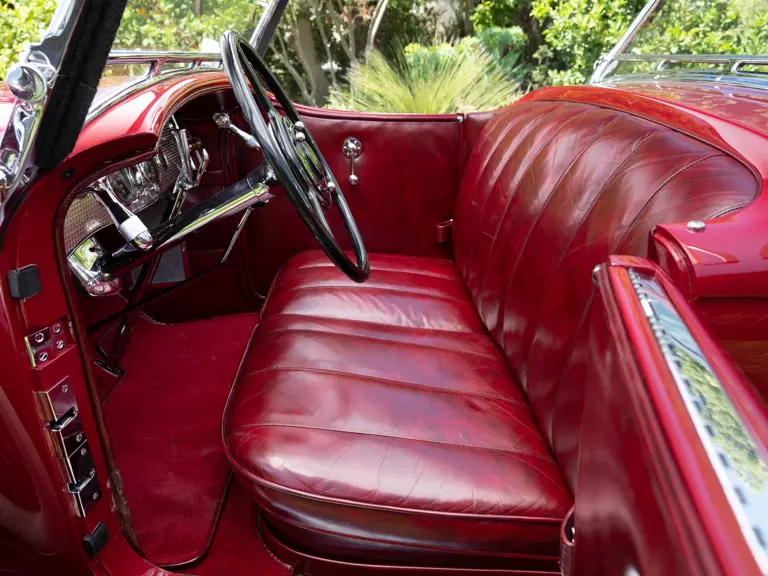
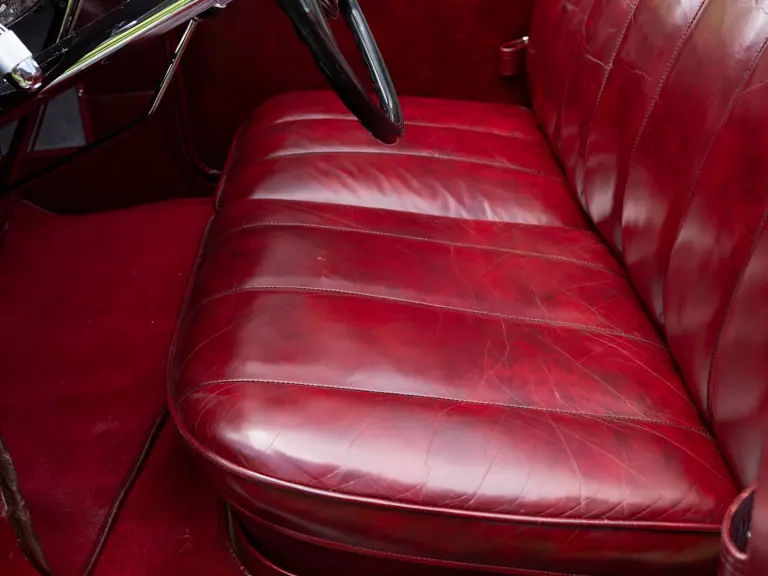
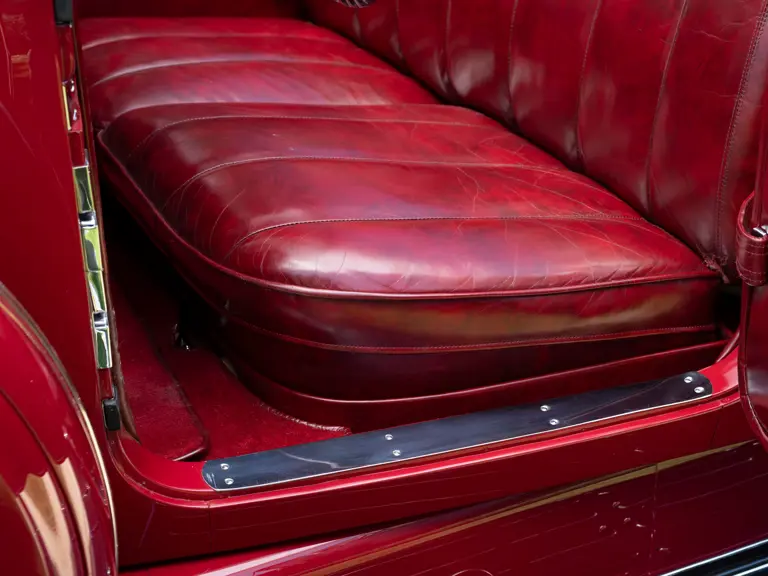
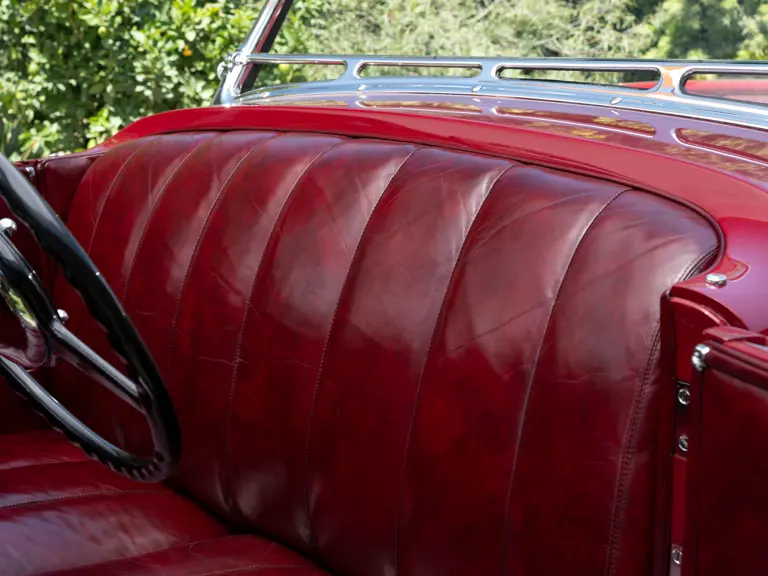
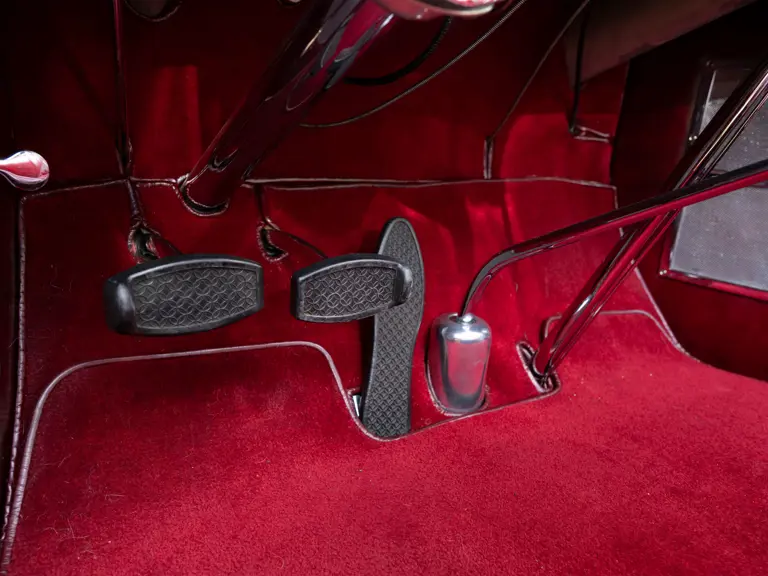
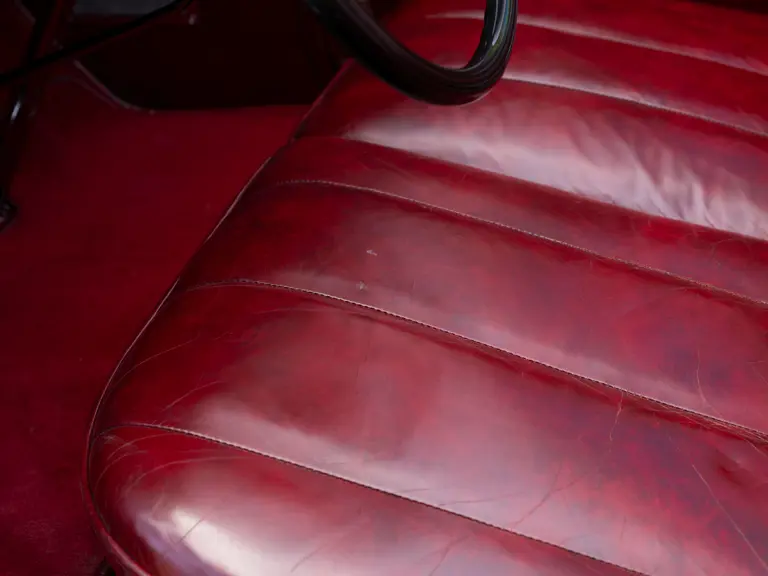
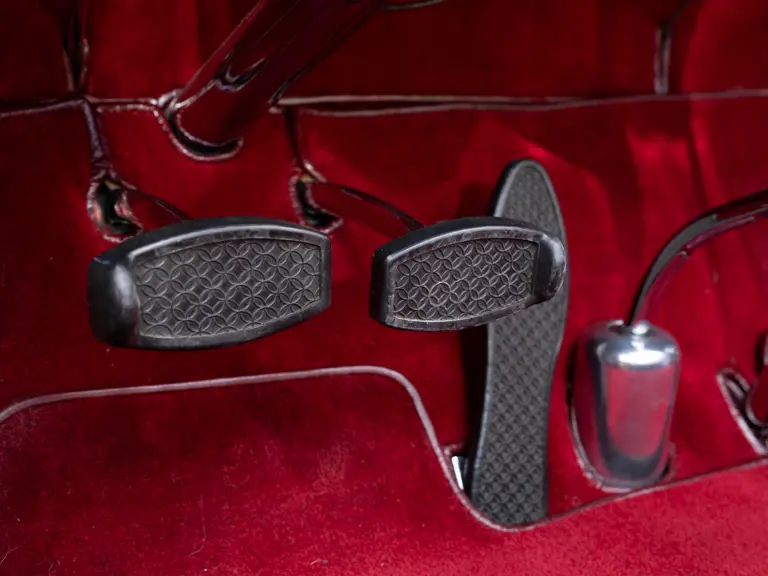
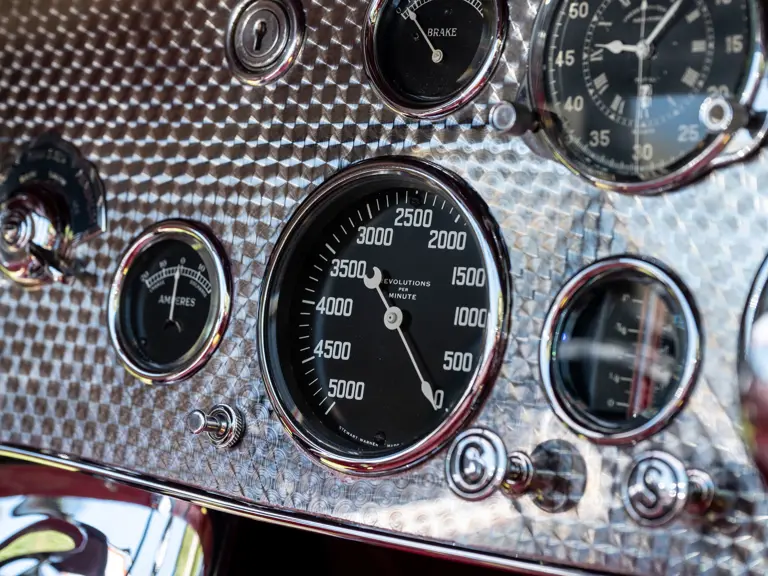
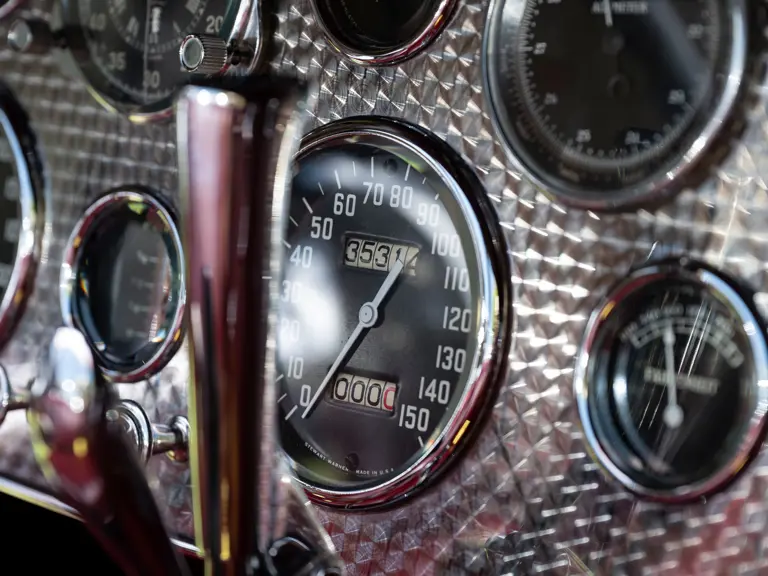
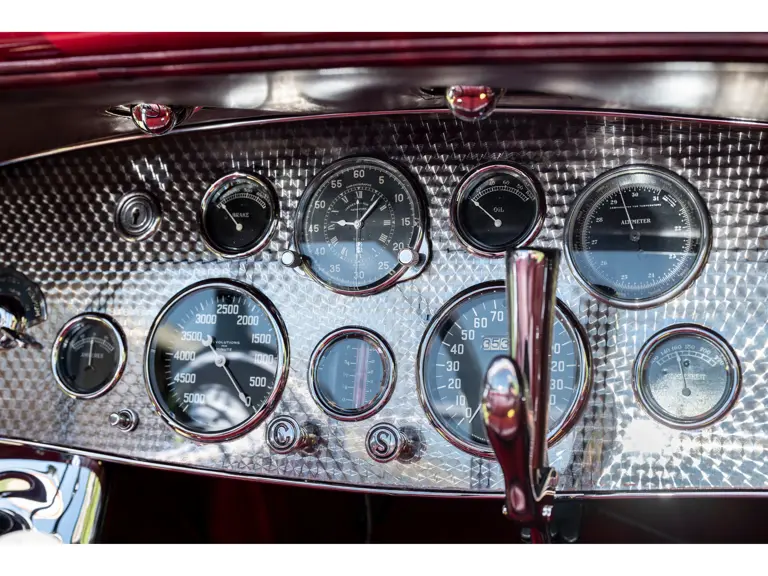
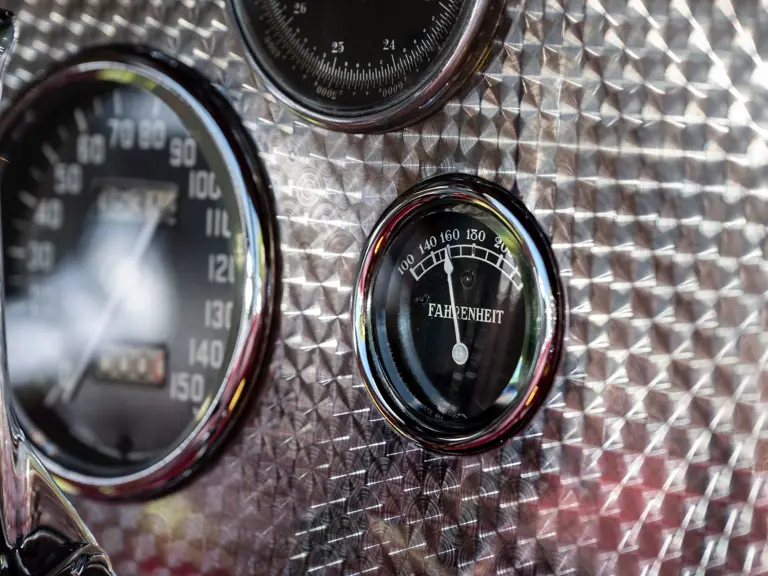
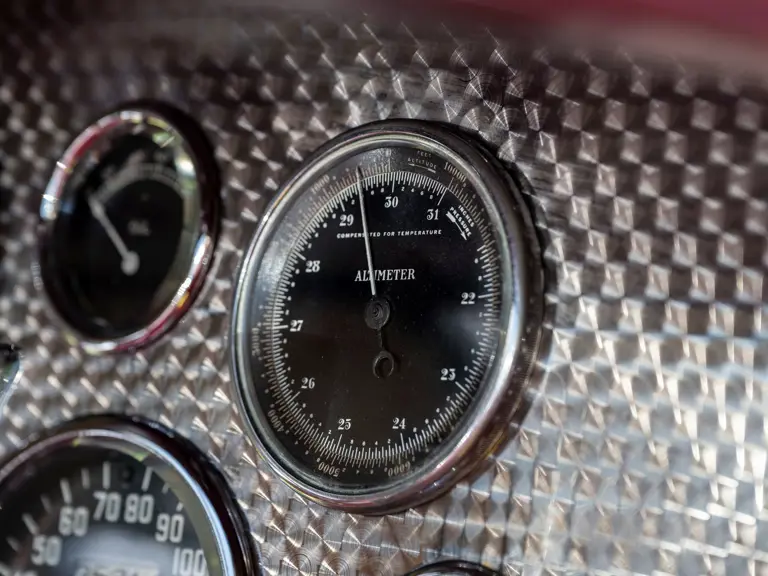
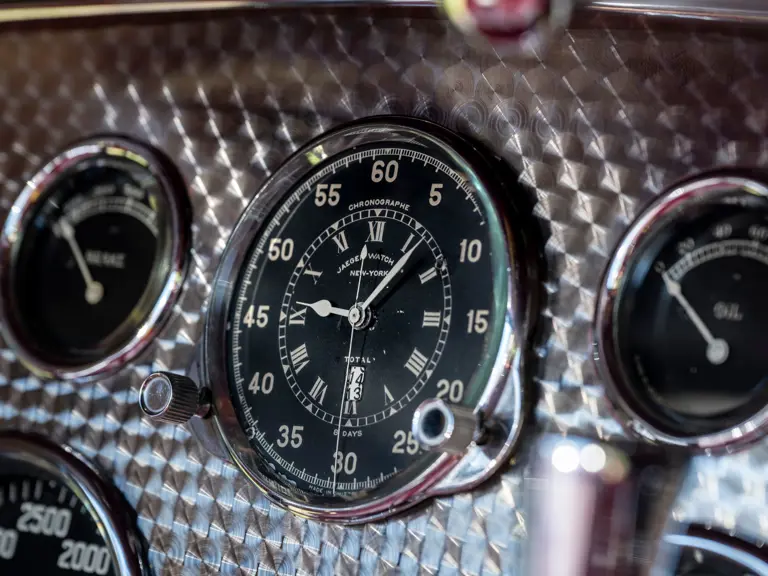
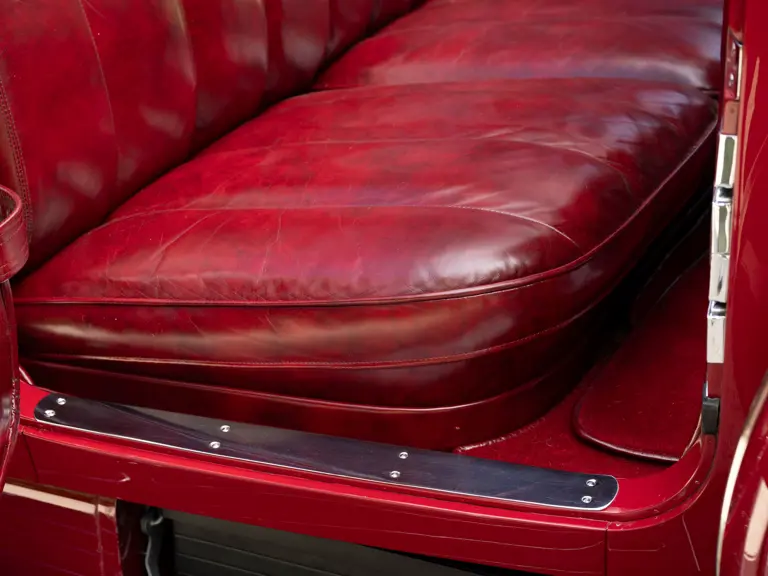
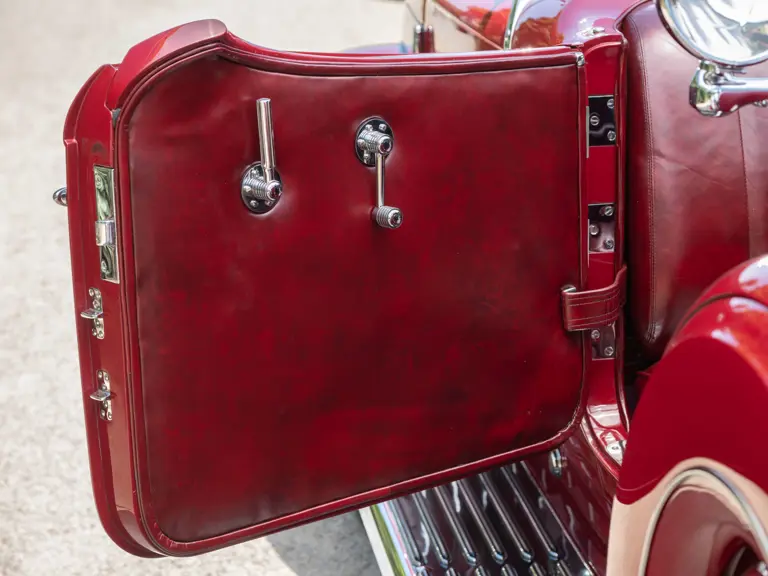
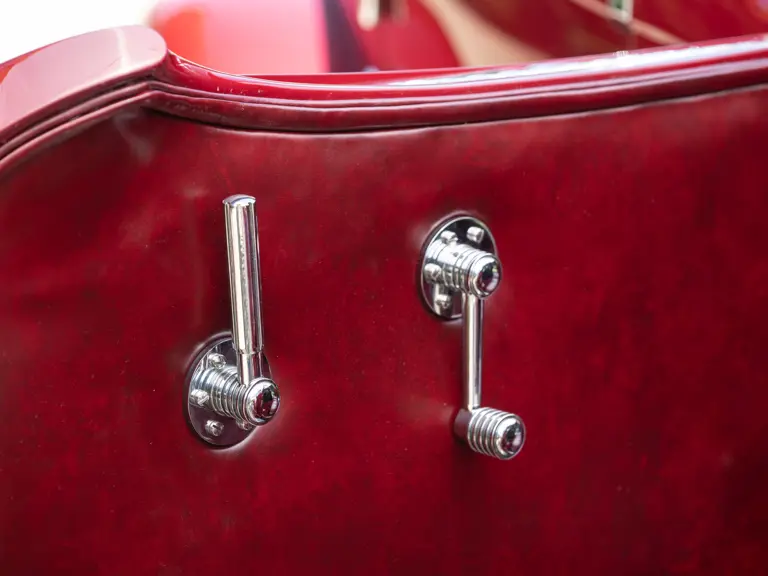
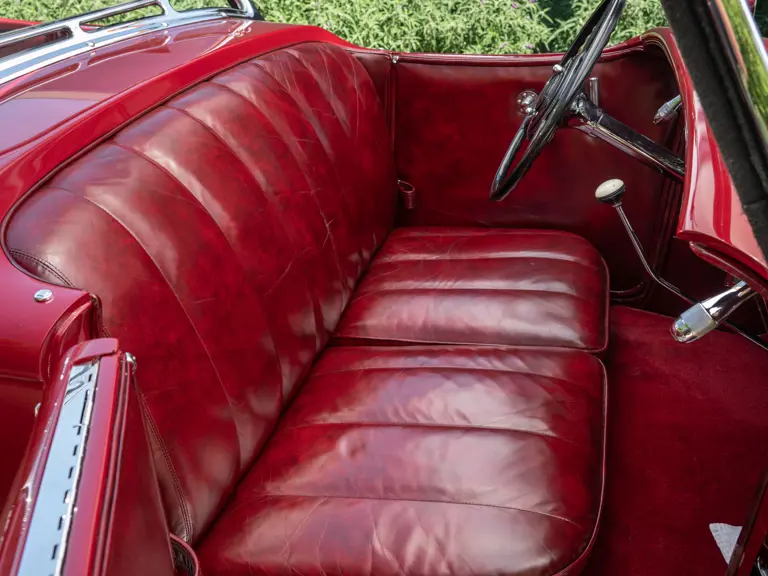
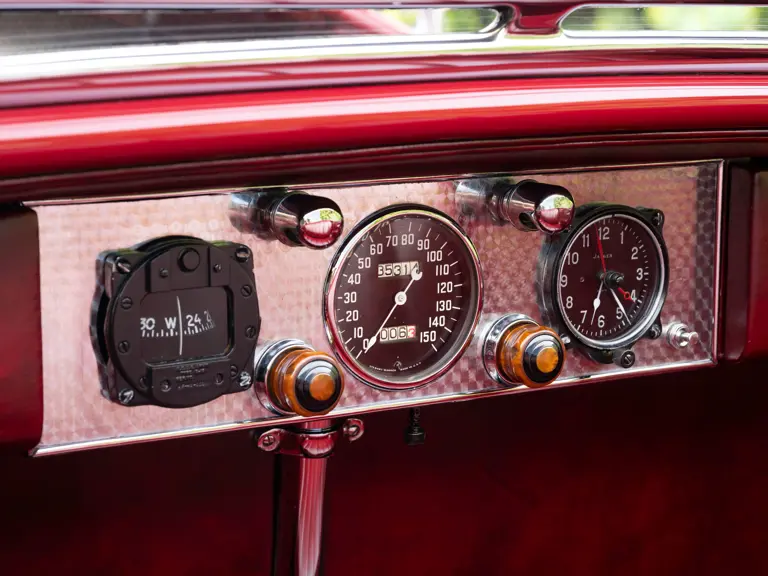
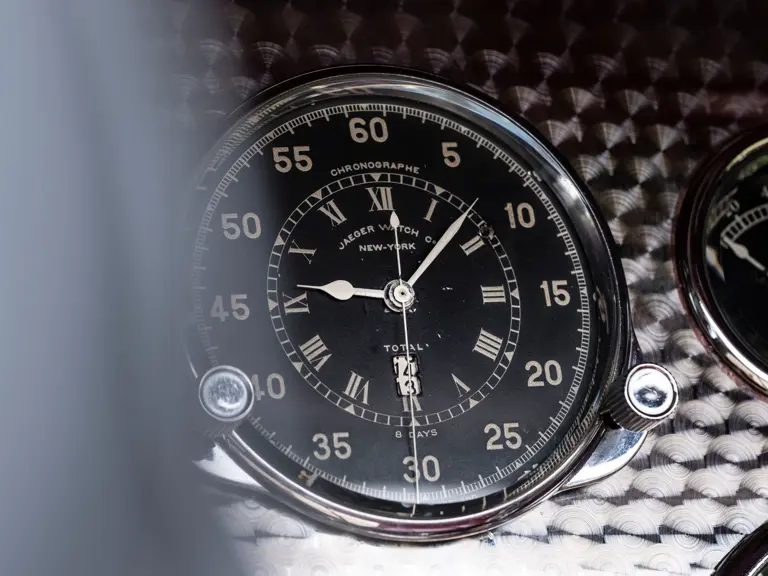
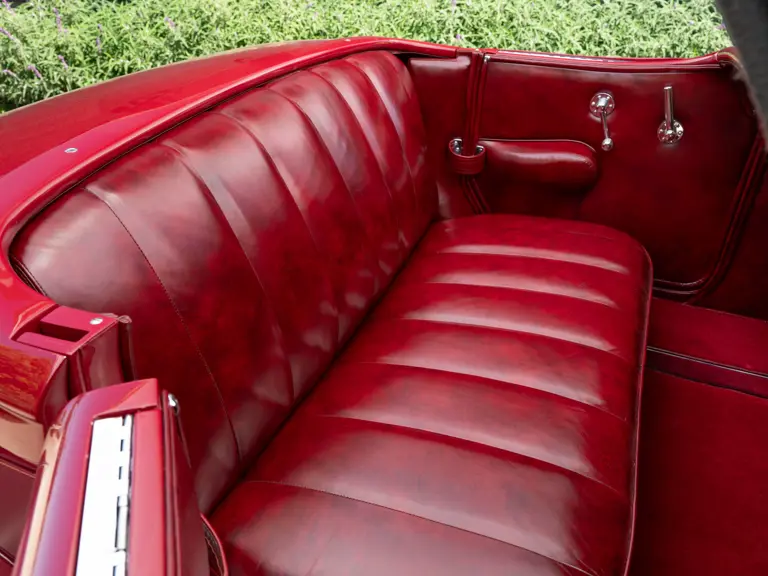
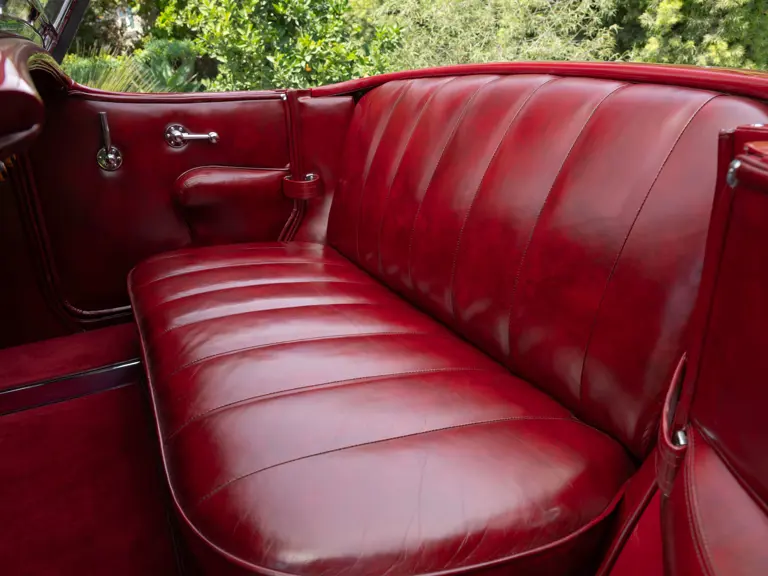
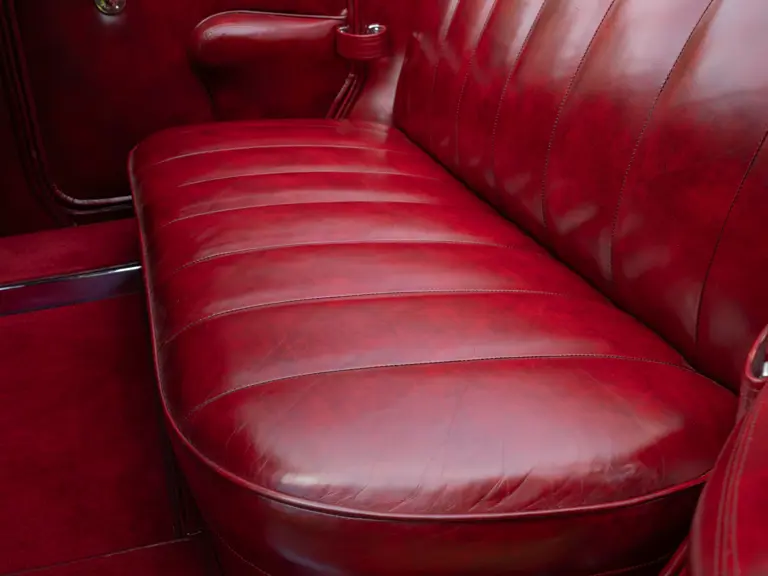
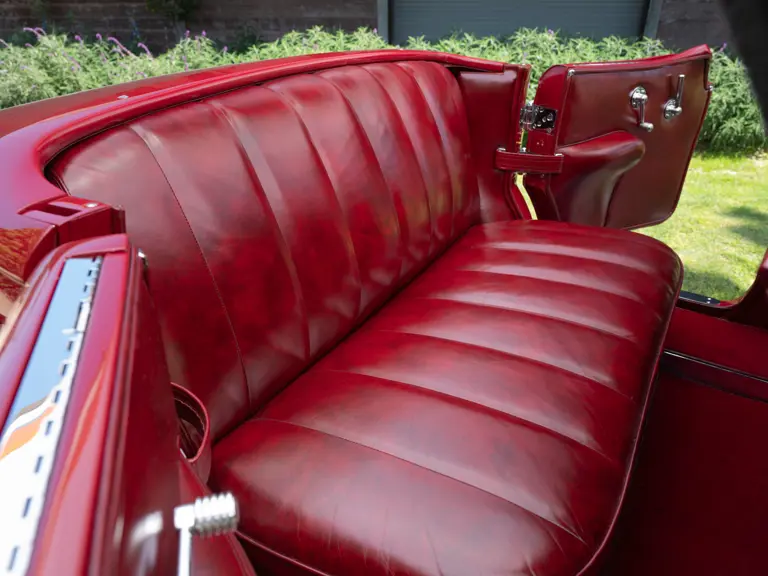
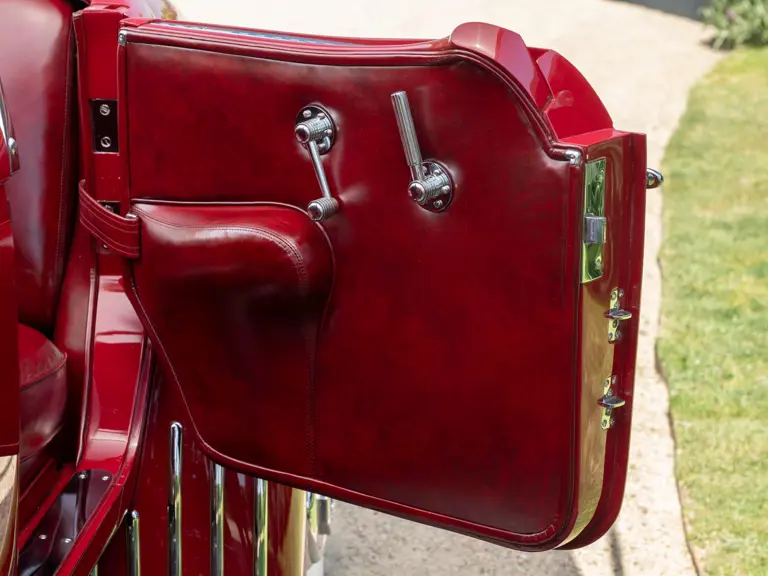
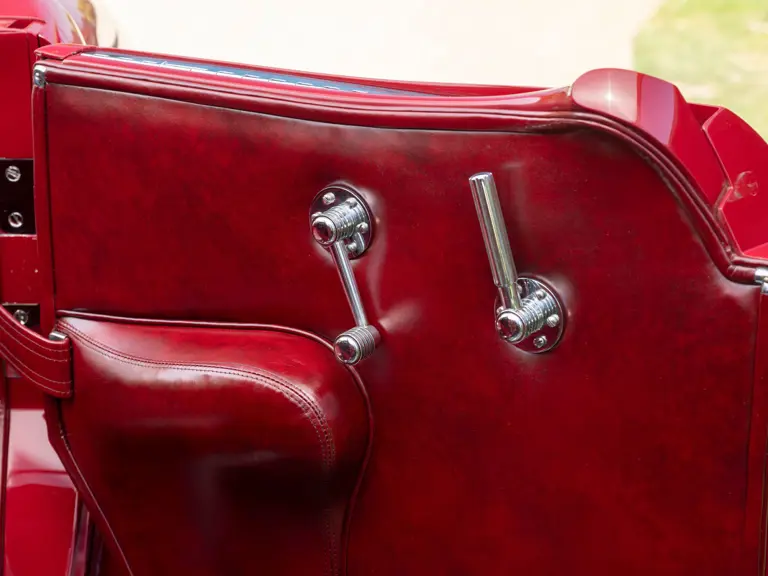
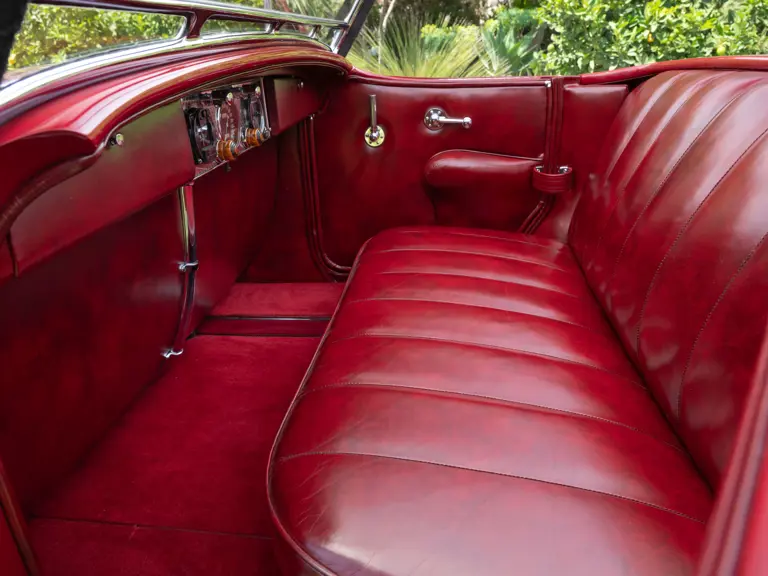
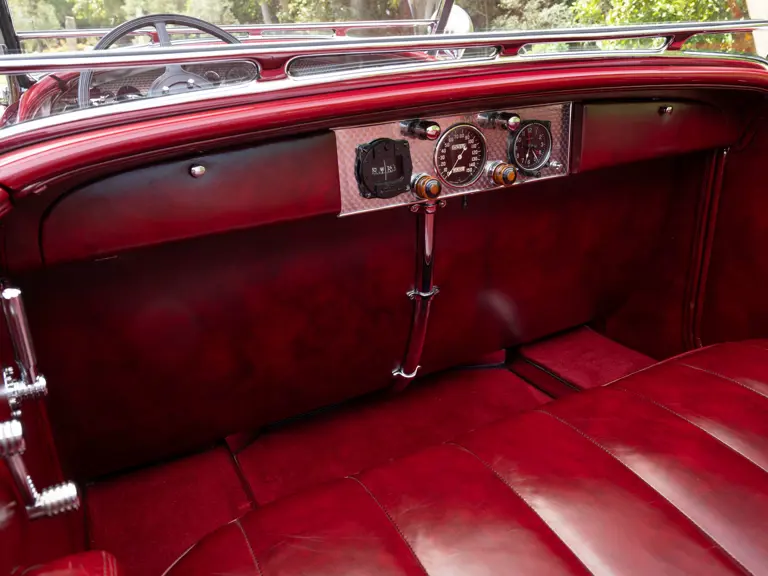
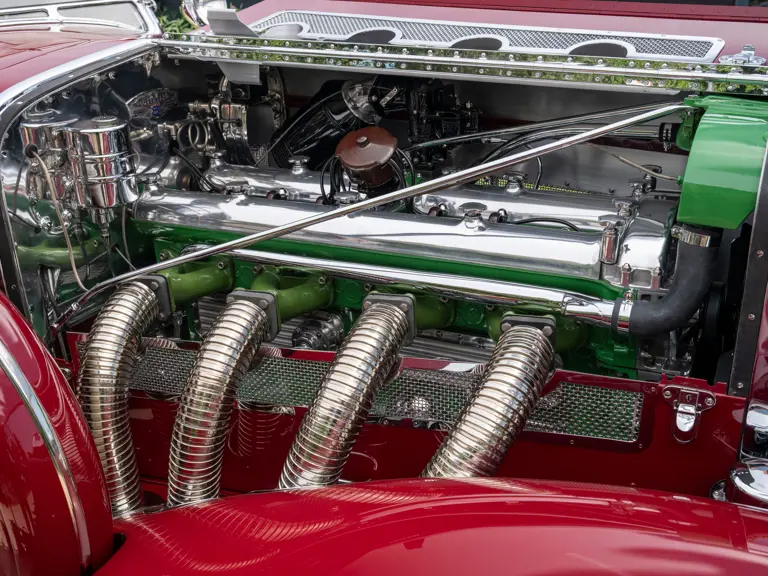
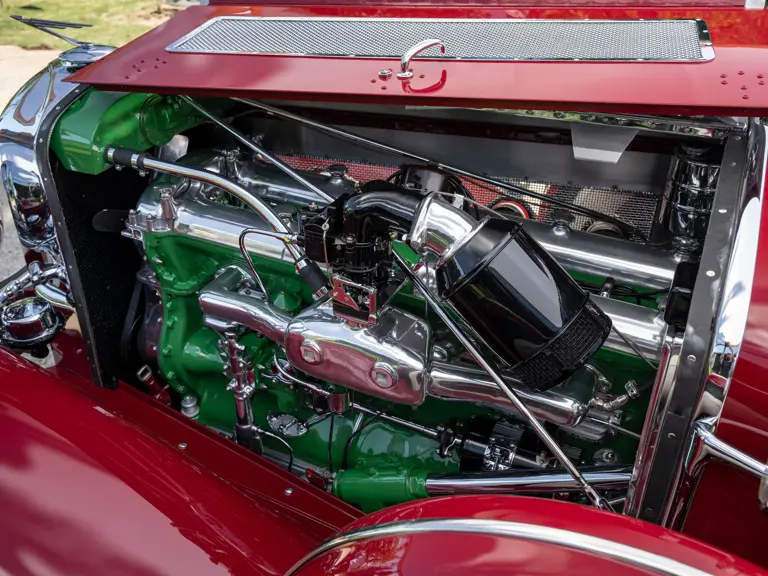
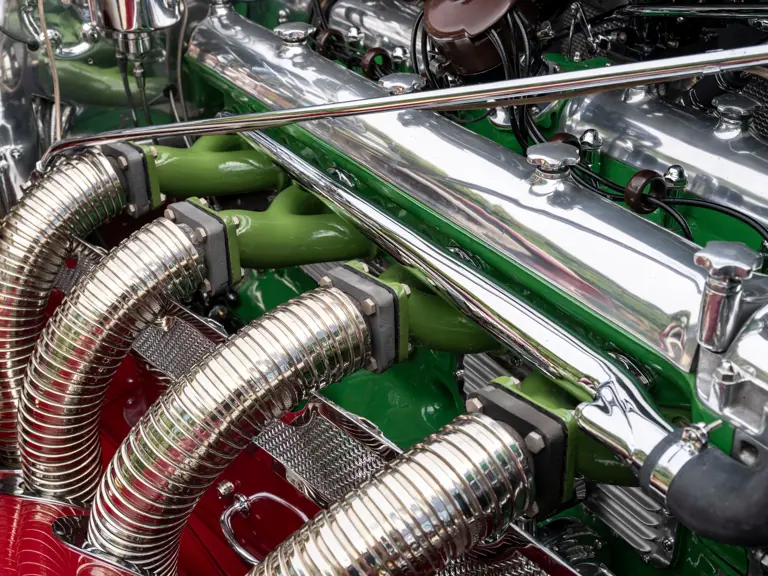
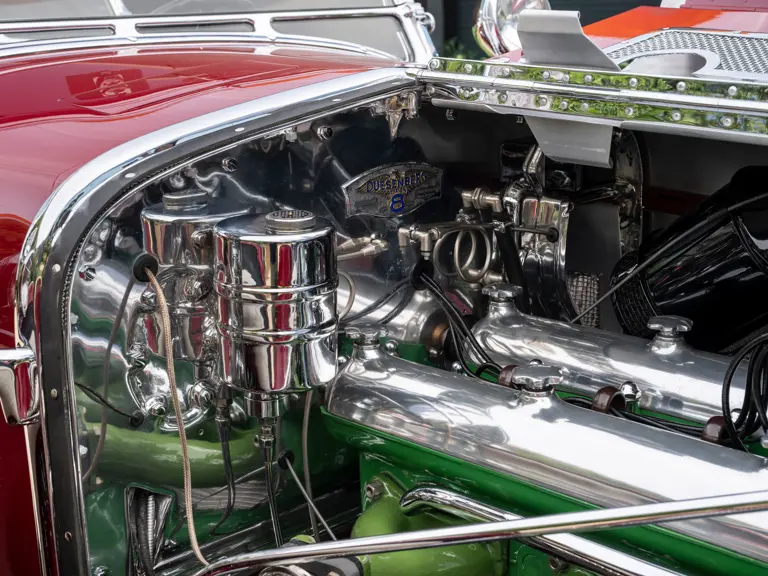
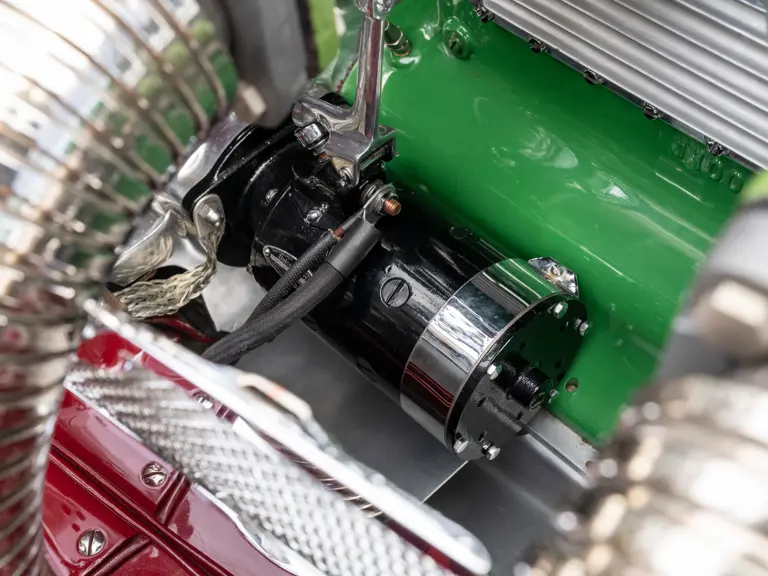
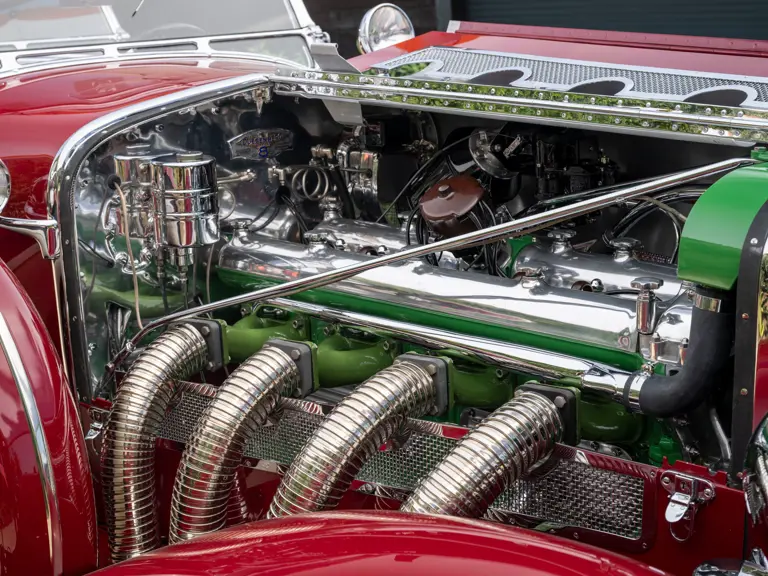
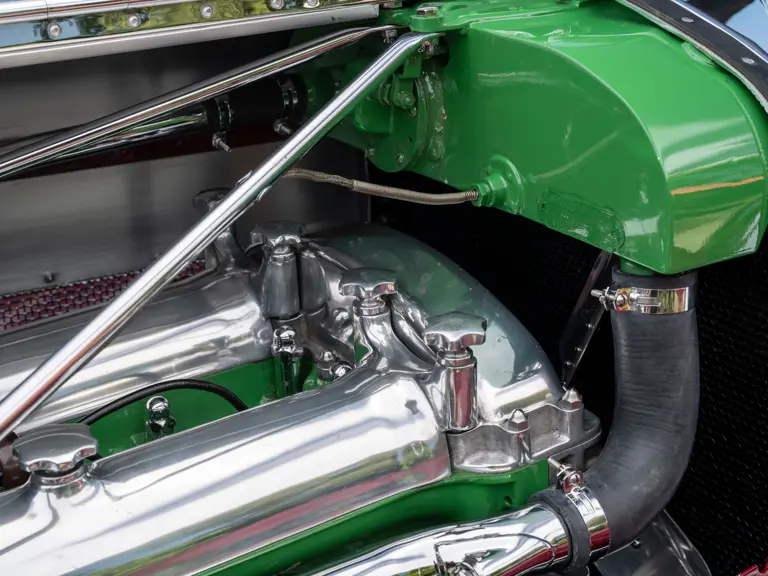
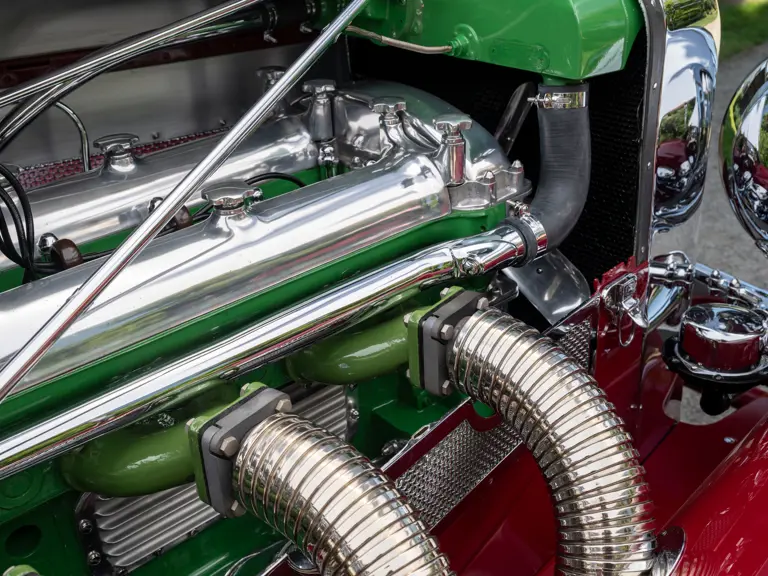
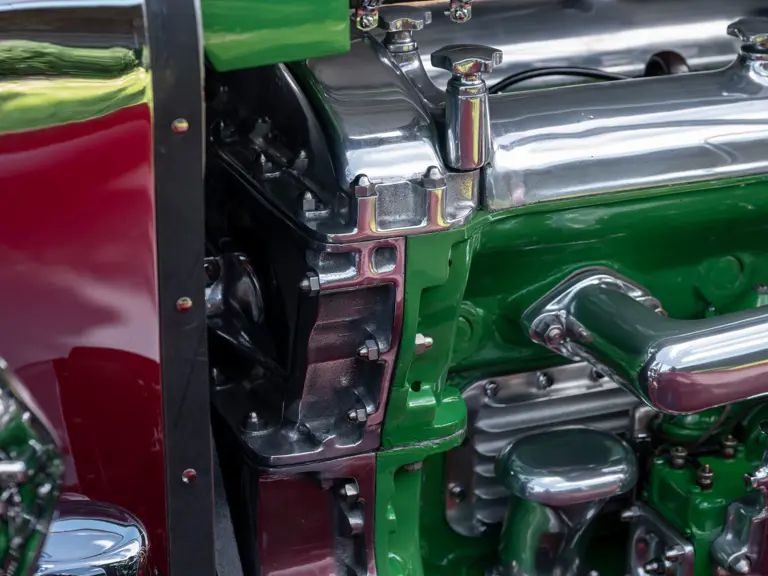
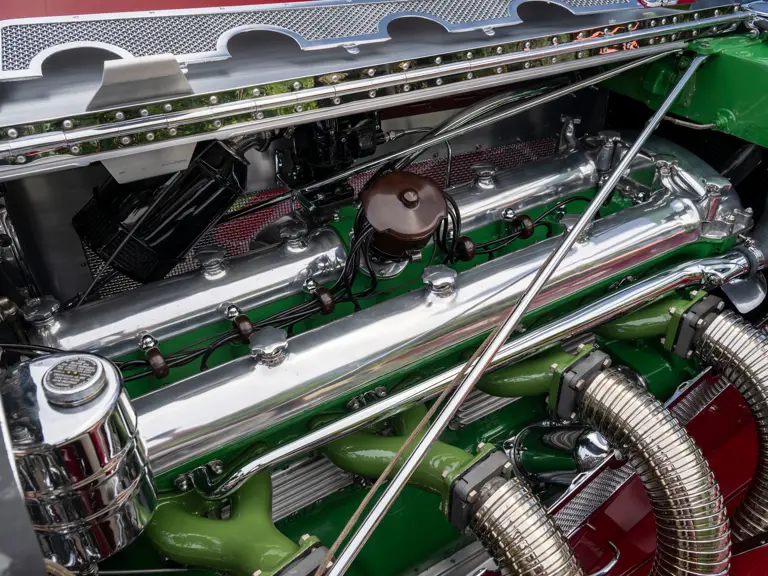
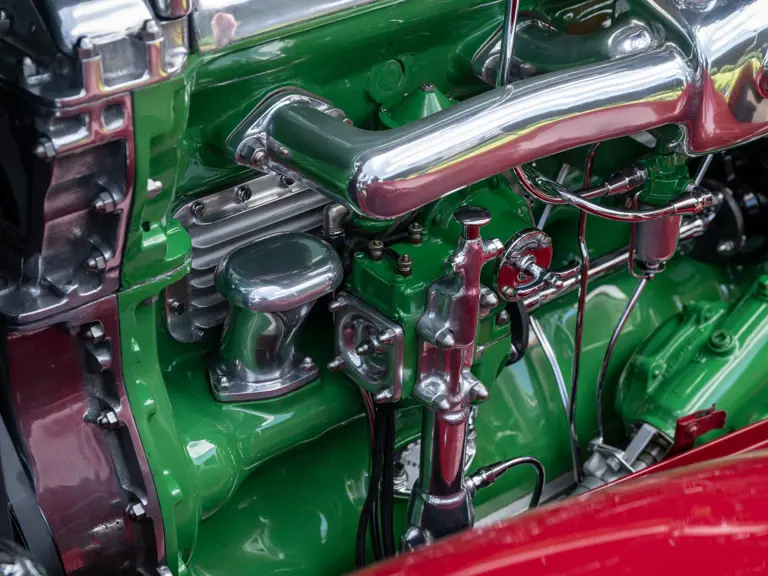
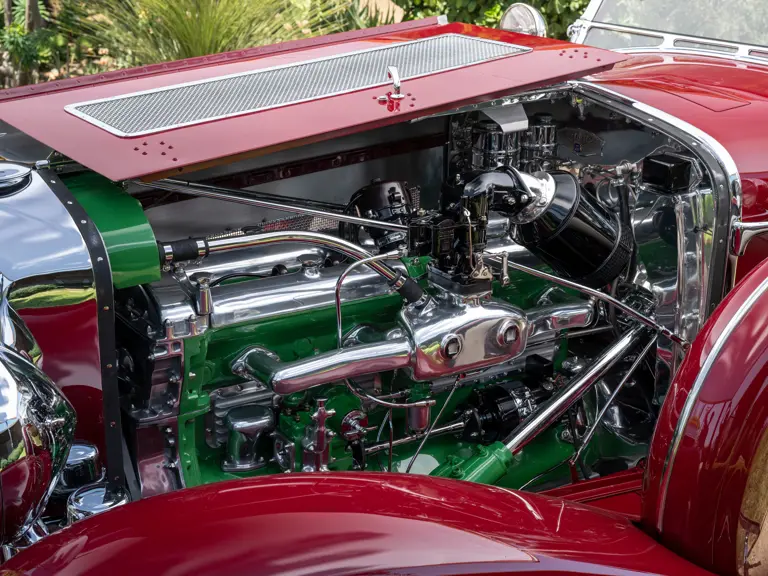
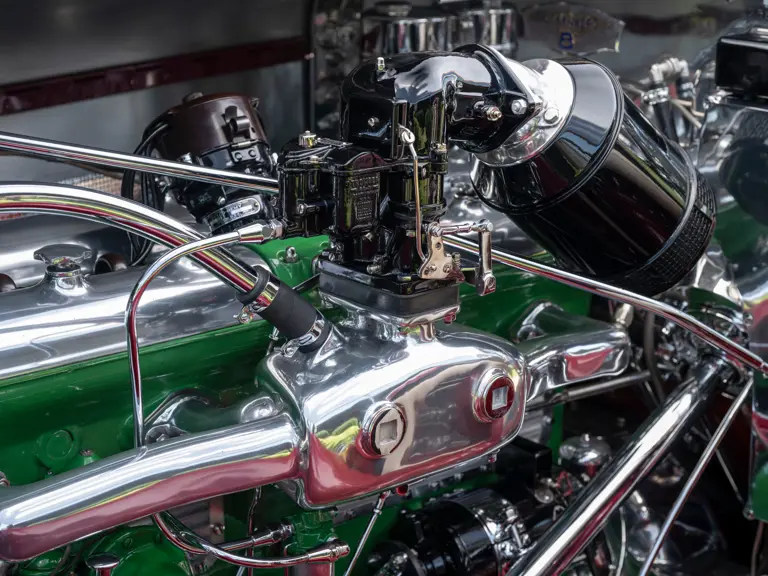
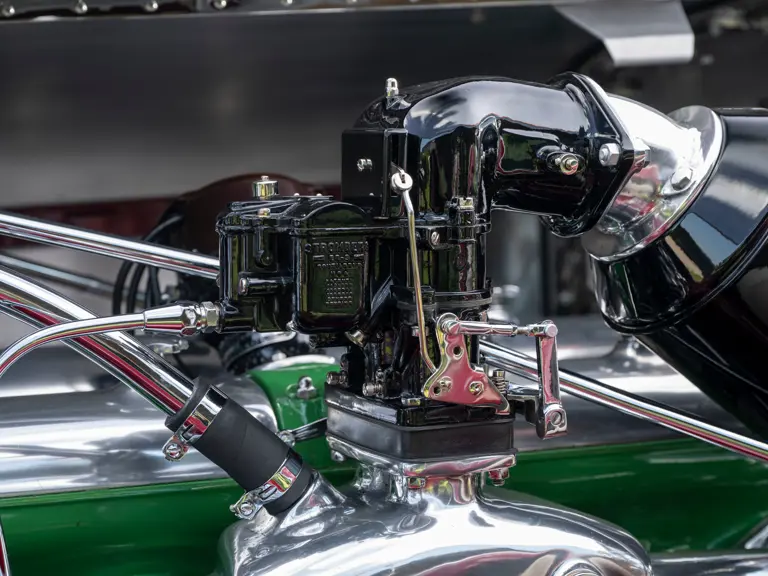
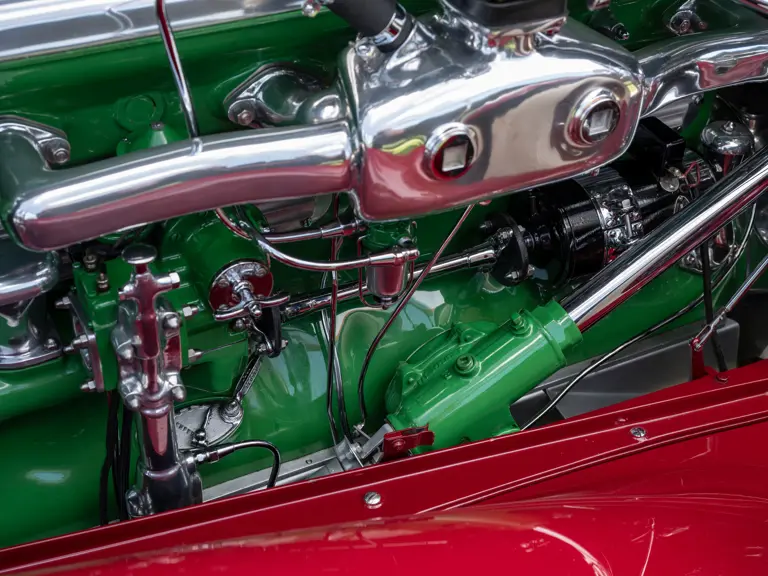
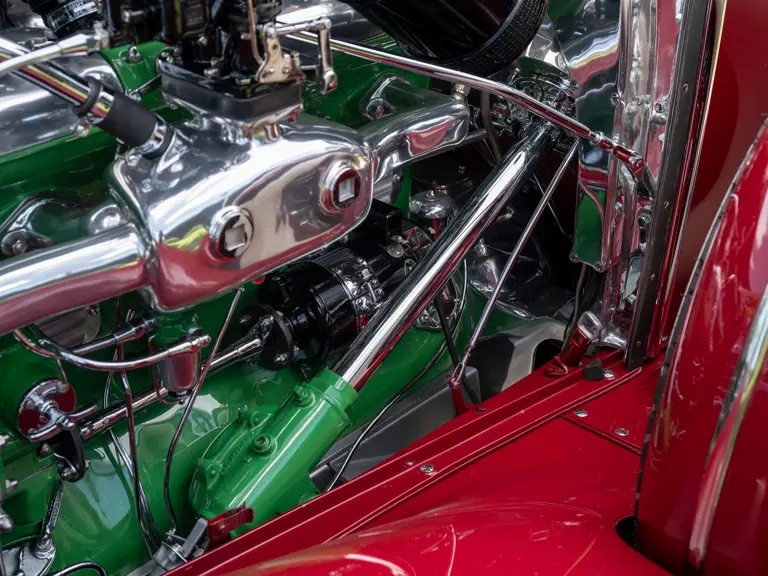
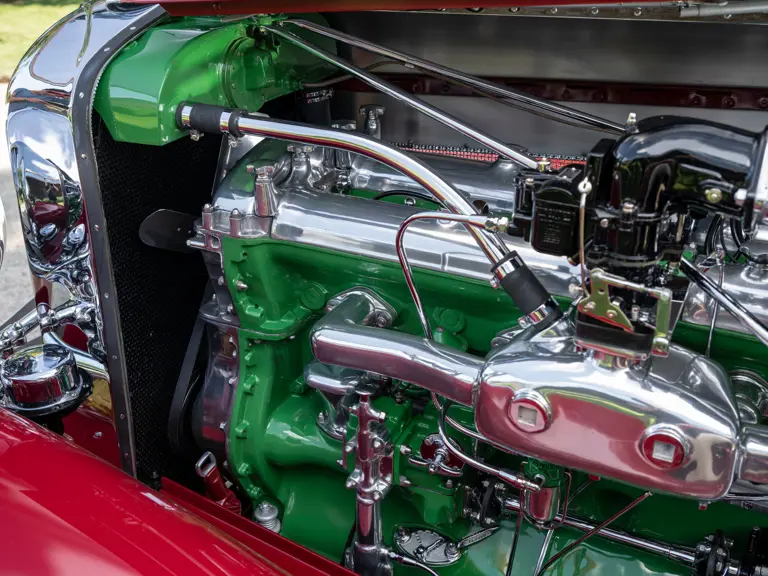
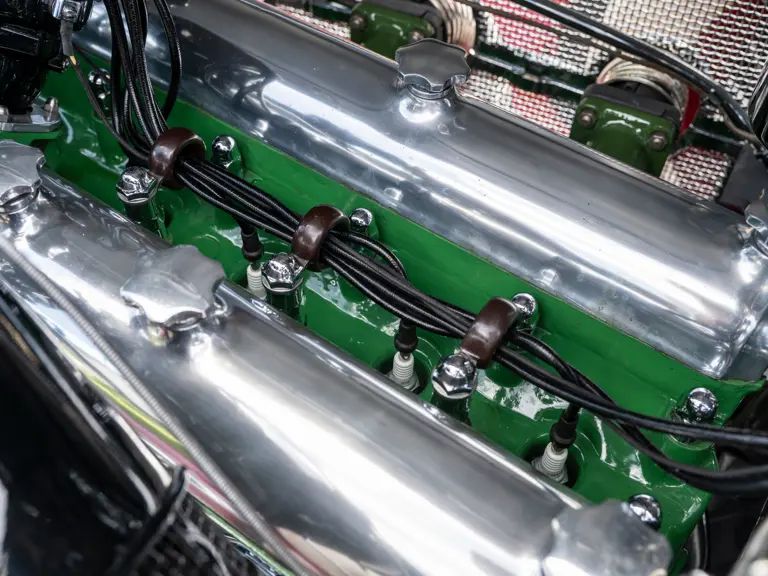
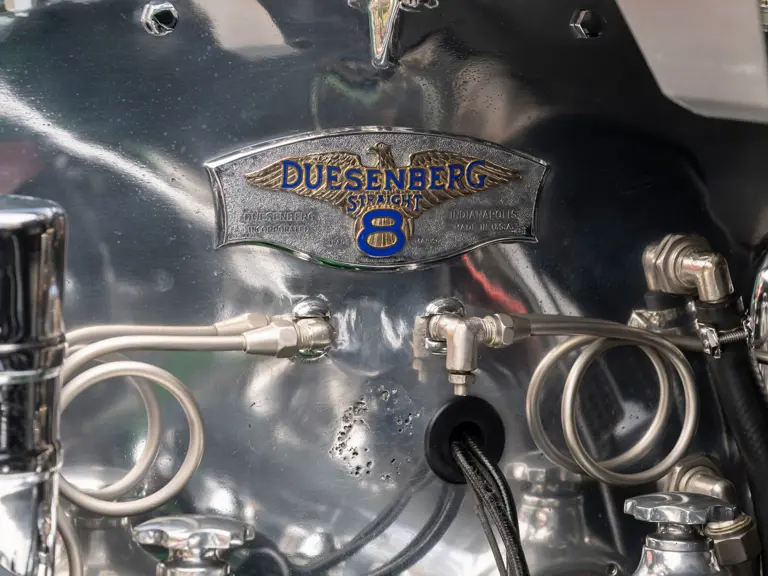
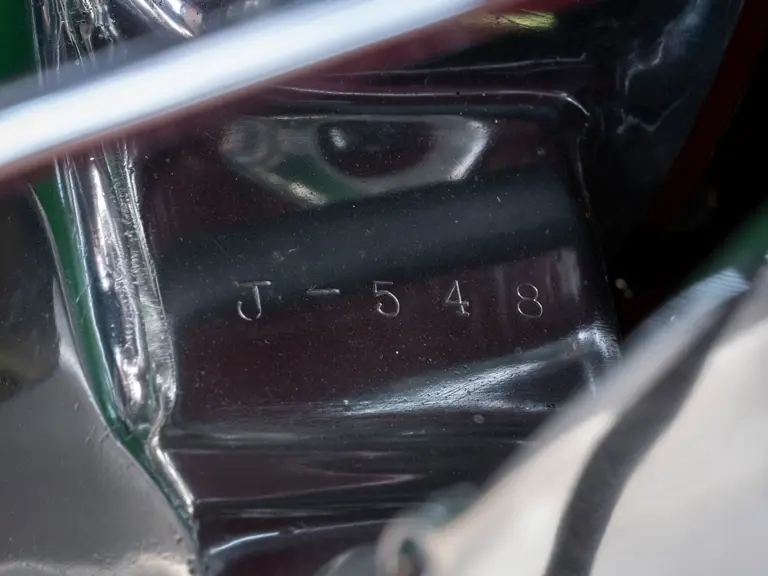
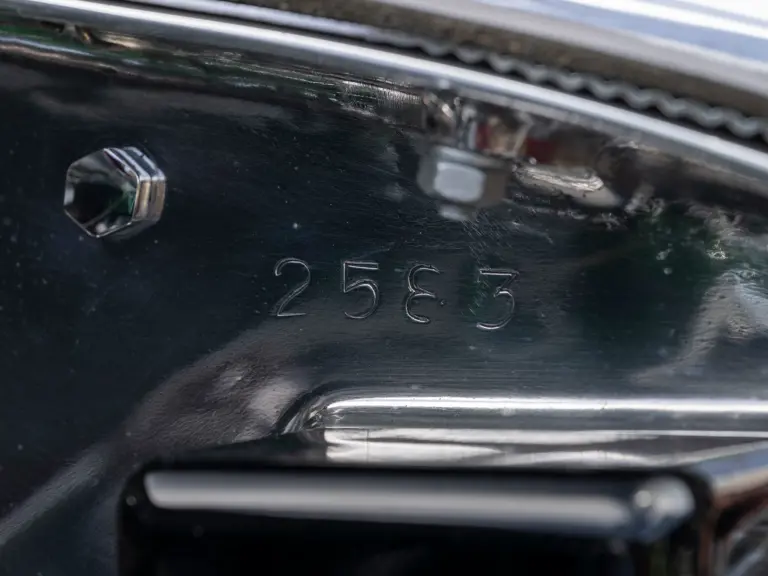
 | Monterey, California
| Monterey, California
